- College Essay
- Argumentative Essay
- Expository Essay
- Narrative Essay
- Descriptive Essay
- Scholarship Essay
- Admission Essay
- Reflective Essay
- Nursing Essay
- Economics Essay
Assignments
- Term Papers
- Research Papers
- Case Studies
- Dissertation
- Presentation
- Editing Help
- Cheap Essay Writing
- How to Order
Speech Writing
Introduction Speech

Introduction Speech- Tips & Examples
10 min read

People also read
The 10 Key Steps for Perfect Speech Writing
Understanding Speech Format - Simple Steps for Outlining
How to Start A Speech - 13 Interesting Ideas & Examples
20+ Outstanding Speech Examples for Your Help
Common Types of Speeches that Every Speechwriter Should Know
Good Impromptu Speech Topics for Students
Entertaining Speech Topics for Your Next Debate
Understanding Special Occasion Speech: Types, Steps, Examples and Tips
How to Write A Good Acceptance Speech?
Writing A Presentation Speech In English: Tips And Examples
Commemorative Speech - Writing Guide, Outline & Examples
Farewell Speech | Writing Tips & Examples
How to Write an Extemporaneous Speech? A Step-by-Step Guide
A Graduation Speech Writing Guide with Examples
Introduction speeches are all around us. Whenever we meet a new group of people in formal settings, we have to introduce ourselves. That’s what an introduction speech is all about.
When you're facing a formal audience, your ability to deliver a compelling introductory speech can make a lot of difference. With the correct approach, you can build credibility and connections.
In this blog, we'll take you through the steps to craft an impactful introduction speech. You’ll also get examples and valuable tips to ensure you leave a lasting impression.
So, let's dive in!
- 1. What is an Introduction Speech?
- 2. How to Write an Introduction Speech?
- 3. Introduction Speech Outline
- 4. Introduction Speech Example
- 5. Introduction Speech Ideas
- 6. 7 Tips for Delivering the Best Introduction Speech
What is an Introduction Speech?
An introduction speech, or introductory address, is a brief presentation at the beginning of an event or public speaking engagement. Its primary purpose is to establish a connection with the audience and to introduce yourself or the main speaker.
This type of speech is commonly used in a variety of situations, including:
- Public Speaking: When you step onto a stage to address a large crowd, you start with an introduction to establish your presence and engage the audience.
- Networking Events: When meeting new people in professional or social settings, an effective introduction speech can help you make a memorable first impression.
- Formal Gatherings: From weddings to conferences, introductions set the tone for the event and create a warm and welcoming atmosphere.
In other words, an introduction speech is simply a way to introduce yourself to a crowd of people.
How to Write an Introduction Speech?
Before you can just go and deliver your speech, you need to prepare for it. Writing a speech helps you organize your ideas and prepare your speech effectively.
Here is how to introduce yourself in a speech.
- Know Your Audience
Understanding your audience is crucial. Consider their interests, backgrounds, and expectations to tailor your introduction accordingly.
For instance, the audience members could be your colleagues, new classmates, or various guests depending on the occasion. Understanding your audience will help you decide what they are expecting from you as a speaker.
- Opening the Speech with a Hook
The best speech introduction starts with a hook or opening line that grabs your audience's attention. This could be a surprising fact, a relevant quote, or a thought-provoking question about yourself or the occasion.
- Introduce Yourself
Introduce yourself to the audience. State your name, occupation, or other details relevant to the occasion. You should have mentioned the reason for your speech clearly. It will build your credibility and give the readers reasons to stay with you and read your speech.
- Keep It Concise
So how long is an introduction speech?
Introduction speeches should be brief and to the point. Aim for around 1-2 minutes in most cases. Avoid overloading the introduction with excessive details.
- Highlight Key Points
Mention the most important information that establishes the speaker's credibility or your own qualifications. Write down any relevant achievements, expertise, or credentials to include in your speech. Encourage the audience to connect with you using relatable anecdotes or common interests.
- Rehearse and Edit
Practice your introduction speech to ensure it flows smoothly and stays within the time frame. Edit out any unnecessary information, ensuring it's concise and impactful.
- Tailor for the Occasion
Adjust the tone and content of your introduction speech to match the formality and purpose of the event. What works for a business conference may not be suitable for a casual gathering.
Introduction Speech Outline
To assist you in creating a structured and effective introduction speech, here's a simple speech format that you can follow:
Here is an example outline for a self-introduction speech.
Outline for Self-Introduction Speech
Introduction Speech Example
So if you are wondering what to say in an introduction speech we have you covered! We have compiled introduction speech examples to help you understand how to put your ideas into practice for different scenarios.
Introduction Speech Writing Sample
Short Introduction Speech Sample
Self Introduction Speech for College Students
Introduction Speech about Yourself
Student Presentation Introduction Speech Script
Teacher Introduction Speech
New Employee Self Introduction Speech
Introduction Speech for Chief Guest
Moreover, here is a video example of a self-introduction speech. Watch it to understand how you should deliver your speech:
Want to read examples for other kinds of speeches? Find the best speeches at our blog about speech examples !
What Are Some Famous Introduction Speeches?
Here are the best introduction speeches for students to get inspired:
- Malala Yousafzai's Nobel Peace Prize Acceptance Speech (2014) : Malala's speech upon receiving the Nobel Peace Prize introduced her advocacy for girls' education and youth empowerment globally.
- Elon Musk's Presentation on SpaceX Interplanetary Transport System (2016) : Elon Musk introduced SpaceX's ambitious plans for interplanetary travel, outlining a vision for the future of space exploration.
- Michelle Obama's Democratic National Convention Speech (2008) : Michelle Obama's speech introduced her as a potential First Lady, sharing personal stories and values that resonated with the audience.
- J.K. Rowling's Harvard Commencement Speech (2008) : Rowling's speech introduced themes of failure, imagination, and resilience, drawing from her personal journey as an author and philanthropist.
Introduction Speech Ideas
So now that you’ve understood what an introduction speech is, you may want to write one of your own. So what should you talk about?
The following are some sample introduction speech topics and ideas that can provide an engaging start to a presentation, meeting, or social gathering.
- Personal Story: Share a brief personal story or experience that has shaped you.
- Professional Background: Highlight your career achievements and expertise.
- Hobby or Passion: Discuss a hobby or passion you're enthusiastic about.
- Volunteer Work: Talk about your involvement in volunteer work or community service.
- Travel Adventures: Share anecdotes from your travel adventures.
- Books or Literature: Provide an introduction related to a favorite book, author, or literary work.
- Achievements and Milestones: Highlight significant achievements and milestones in your life or career.
- Cultural Heritage: Explore your cultural heritage and its influence on your identity.
- Social or Environmental Cause: Discuss your dedication to a particular social or environmental cause.
- Future Aspirations: Share your future goals and aspirations.
You can deliver engaging speeches on all kinds of topics. Here is a list of entertaining speech topics to get inspiration.
7 Tips for Delivering the Best Introduction Speech
Now that you know how to write an effective introduction speech, let's focus on the delivery. The way you present your introduction is just as important as the content itself. Here are some valuable tips to ensure you deliver a better introduction speech:
Tip# 1: Maintain Eye Contact
Make eye contact with the audience to establish a connection. This shows confidence and engages your listeners.
Tip# 2: Use Appropriate Body Language
Your body language should convey confidence and warmth. Stand or sit up straight, use open gestures, and avoid fidgeting.
Tip# 3: Mind Your Pace
Speak at a moderate pace, avoiding rapid speech. A well-paced speech is easier to follow and more engaging.
Tip# 4: Avoid Filler Words
Minimize the use of filler words such as "um," "uh," and "like." They can be distracting and detract from your message.
Tip# 5: Be Enthusiastic
Convey enthusiasm about the topic or the speaker. Your energy can be contagious and inspire the audience's interest.
Tip# 6: Practice, Practice, Practice
Rehearse your speech multiple times. Practice in front of a mirror, record yourself or seek feedback from others.
Tip# 7: Be Mindful of Time
Stay within the allocated time for your introduction. Going too long can make your speech too boring for the audience.
Mistakes to Avoid in an Introduction Speech
When crafting and delivering an introduction speech, it's important to avoid common pitfalls that can reduce its impact. Here are some mistakes to watch out for:
- Rambling On: Avoid making the introduction too long. Keep it short and sweet to set the stage without stealing the spotlight.
- Lack of Preparation: Not preparing enough can lead to awkward pauses or losing your train of thought. Practice your speech to feel more confident.
- Using Jargon or Complex Language: Steer clear of technical jargon or complicated language that might confuse the audience. Keep it simple and clear.
- Being Too Generic: A bland introduction can set a dull tone. Make your speech specific to the event and the speaker to keep it engaging.
- Using Inappropriate Humor: Be careful with humor. Avoid jokes that could offend or alienate the audience.
- Overloading with Background Information: Providing too much background information can overwhelm the audience. Offer just enough to give context without bogging down the introduction.
To Conclude,
An introduction speech is more than just a formality. It's an opportunity to engage, inspire, and connect with your audience in a meaningful way.
With the help of this blog, you're well-equipped to shine in various contexts. So, step onto that stage, speak confidently, and captivate your audience from the very first word.
Moreover, you’re not alone in your journey to becoming a confident introducer. If you ever need assistance, you can place a pay to do my essay request and let the experts help you out.
MyPerfectWords.com offers a custom essay service with experienced professionals who can craft tailored introductions, ensuring your speech makes a lasting impact.
Don't hesitate; hire our professional speech writing service to deliver top-quality speeches at your deadline!
Frequently Asked Questions
How long should a speech introduction be.
A speech introduction should be concise, typically lasting about 1 to 2 minutes. It should set the stage, capture the audience's attention, and provide a clear direction for the rest of the speech.
What Is the Best Speech Introduction Greeting?
The best greeting for a speech introduction depends on the formality of the event. Some examples include:
- Formal: "Good morning/afternoon/evening, distinguished guests."
- Semi-formal: "Hello everyone, thank you for being here today."
- Informal: "Hi everyone, thanks for coming."
What Word to Start a Speech?
Starting a speech with an engaging word or phrase can capture the audience's attention. Here are a few speech starting lines:
- "Imagine..." to prompt the audience to visualize something.
- "Today..." to ground the speech in the present moment.
- "Have you ever..." to ask a thought-provoking question.
- "In our lives..." to make a personal connection.
- "Picture this..." to create a vivid mental image.

Write Essay Within 60 Seconds!

Dr. Barbara is a highly experienced writer and author who holds a Ph.D. degree in public health from an Ivy League school. She has worked in the medical field for many years, conducting extensive research on various health topics. Her writing has been featured in several top-tier publications.
Struggling With Your Paper?
Get a custom paper written at
With a FREE Turnitin report, and a 100% money-back guarantee
LIMITED TIME ONLY!
Keep reading

OFFER EXPIRES SOON!
15 Powerful Speech Opening Lines (And How to Create Your Own)
Hrideep barot.
- Public Speaking , Speech Writing

Powerful speech opening lines set the tone and mood of your speech. It’s what grips the audience to want to know more about the rest of your talk.
The first few seconds are critical. It’s when you have maximum attention of the audience. And you must capitalize on that!
Instead of starting off with something plain and obvious such as a ‘Thank you’ or ‘Good Morning’, there’s so much more you can do for a powerful speech opening (here’s a great article we wrote a while ago on how you should NOT start your speech ).
To help you with this, I’ve compiled some of my favourite openings from various speakers. These speakers have gone on to deliver TED talks , win international Toastmaster competitions or are just noteworthy people who have mastered the art of communication.
After each speaker’s opening line, I have added how you can include their style of opening into your own speech. Understanding how these great speakers do it will certainly give you an idea to create your own speech opening line which will grip the audience from the outset!
Alright! Let’s dive into the 15 powerful speech openings…
Note: Want to take your communications skills to the next level? Book a complimentary consultation with one of our expert communication coaches. We’ll look under the hood of your hurdles and pick two to three growth opportunities so you can speak with impact!
1. Ric Elias
Opening: “Imagine a big explosion as you climb through 3,000 ft. Imagine a plane full of smoke. Imagine an engine going clack, clack, clack. It sounds scary. Well I had a unique seat that day. I was sitting in 1D.”
How to use the power of imagination to open your speech?
Putting your audience in a state of imagination can work extremely well to captivate them for the remainder of your talk.
It really helps to bring your audience in a certain mood that preps them for what’s about to come next. Speakers have used this with high effectiveness by transporting their audience into an imaginary land to help prove their point.
When Ric Elias opened his speech, the detail he used (3000 ft, sound of the engine going clack-clack-clack) made me feel that I too was in the plane. He was trying to make the audience experience what he was feeling – and, at least in my opinion, he did.
When using the imagination opening for speeches, the key is – detail. While we want the audience to wander into imagination, we want them to wander off to the image that we want to create for them. So, detail out your scenario if you’re going to use this technique.
Make your audience feel like they too are in the same circumstance as you were when you were in that particular situation.
2. Barack Obama
Opening: “You can’t say it, but you know it’s true.”
3. Seth MacFarlane
Opening: “There’s nowhere I would rather be on a day like this than around all this electoral equipment.” (It was raining)
How to use humour to open your speech?
When you use humour in a manner that suits your personality, it can set you up for a great speech. Why? Because getting a laugh in the first 30 seconds or so is a great way to quickly get the audience to like you.
And when they like you, they are much more likely to listen to and believe in your ideas.
Obama effortlessly uses his opening line to entice laughter among the audience. He brilliantly used the setting (the context of Trump becoming President) and said a line that completely matched his style of speaking.
Saying a joke without really saying a joke and getting people to laugh requires you to be completely comfortable in your own skin. And that’s not easy for many people (me being one of them).
If the joke doesn’t land as expected, it could lead to a rocky start.
Keep in mind the following when attempting to deliver a funny introduction:
- Know your audience: Make sure your audience gets the context of the joke (if it’s an inside joke among the members you’re speaking to, that’s even better!). You can read this article we wrote where we give you tips on how you can actually get to know your audience better to ensure maximum impact with your speech openings
- The joke should suit your natural personality. Don’t make it look forced or it won’t elicit the desired response
- Test the opening out on a few people who match your real audience. Analyze their response and tweak the joke accordingly if necessary
- Starting your speech with humour means your setting the tone of your speech. It would make sense to have a few more jokes sprinkled around the rest of the speech as well as the audience might be expecting the same from you
4. Mohammed Qahtani
Opening: Puts a cigarette on his lips, lights a lighter, stops just before lighting the cigarette. Looks at audience, “What?”
5. Darren Tay
Opening: Puts a white pair of briefs over his pants.
How to use props to begin your speech?
The reason props work so well in a talk is because in most cases the audience is not expecting anything more than just talking. So when a speaker pulls out an object that is unusual, everyone’s attention goes right to it.
It makes you wonder why that prop is being used in this particular speech.
The key word here is unusual . To grip the audience’s attention at the beginning of the speech, the prop being used should be something that the audience would never expect. Otherwise, it just becomes something that is common. And common = boring!
What Mohammed Qahtani and Darren Tay did superbly well in their talks was that they used props that nobody expected them to.
By pulling out a cigarette and lighter or a white pair of underwear, the audience can’t help but be gripped by what the speaker is about to do next. And that makes for a powerful speech opening.
6. Simon Sinek
Opening: “How do you explain when things don’t go as we assume? Or better, how do you explain when others are able to achieve things that seem to defy all of the assumptions?”
7. Julian Treasure
Opening: “The human voice. It’s the instrument we all play. It’s the most powerful sound in the world. Probably the only one that can start a war or say “I love you.” And yet many people have the experience that when they speak people don’t listen to them. Why is that? How can we speak powerfully to make change in the world?”
How to use questions to open a speech?
I use this method often. Starting off with a question is the simplest way to start your speech in a manner that immediately engages the audience.
But we should keep our questions compelling as opposed to something that is fairly obvious.
I’ve heard many speakers start their speeches with questions like “How many of us want to be successful?”
No one is going to say ‘no’ to that and frankly, I just feel silly raising my hand at such questions.
Simon Sinek and Jullian Treasure used questions in a manner that really made the audience think and make them curious to find out what the answer to that question is.
What Jullian Treasure did even better was the use of a few statements which built up to his question. This made the question even more compelling and set the theme for what the rest of his talk would be about.
So think of what question you can ask in your speech that will:
- Set the theme for the remainder of your speech
- Not be something that is fairly obvious
- Be compelling enough so that the audience will actually want to know what the answer to that question will be
8. Aaron Beverley
Opening: Long pause (after an absurdly long introduction of a 57-word speech title). “Be honest. You enjoyed that, didn’t you?”
How to use silence for speech openings?
The reason this speech opening stands out is because of the fact that the title itself is 57 words long. The audience was already hilariously intrigued by what was going to come next.
But what’s so gripping here is the way Aaron holds the crowd’s suspense by…doing nothing. For about 10 to 12 seconds he did nothing but stand and look at the audience. Everyone quietened down. He then broke this silence by a humorous remark that brought the audience laughing down again.
When going on to open your speech, besides focusing on building a killer opening sentence, how about just being silent?
It’s important to keep in mind that the point of having a strong opening is so that the audience’s attention is all on you and are intrigued enough to want to listen to the rest of your speech.
Silence is a great way to do that. When you get on the stage, just pause for a few seconds (about 3 to 5 seconds) and just look at the crowd. Let the audience and yourself settle in to the fact that the spotlight is now on you.
I can’t put my finger on it, but there is something about starting the speech off with a pure pause that just makes the beginning so much more powerful. It adds credibility to you as a speaker as well, making you look more comfortable and confident on stage.
If you want to know more about the power of pausing in public speaking , check out this post we wrote. It will give you a deeper insight into the importance of pausing and how you can harness it for your own speeches. You can also check out this video to know more about Pausing for Public Speaking:
9. Dan Pink
Opening: “I need to make a confession at the outset here. Little over 20 years ago, I did something that I regret. Something that I’m not particularly proud of. Something that in many ways I wish no one would ever know but that here I feel kind of obliged to reveal.”
10. Kelly McGonigal
Opening: “I have a confession to make. But first I want you to make a little confession to me.”
How to use a build-up to open your speech?
When there are so many amazing ways to start a speech and grip an audience from the outset, why would you ever choose to begin your speech with a ‘Good morning?’.
That’s what I love about build-ups. They set the mood for something awesome that’s about to come in that the audience will feel like they just have to know about.
Instead of starting a speech as it is, see if you can add some build-up to your beginning itself. For instance, in Kelly McGonigal’s speech, she could have started off with the question of stress itself (which she eventually moves on to in her speech). It’s not a bad way to start the speech.
But by adding the statement of “I have a confession to make” and then not revealing the confession for a little bit, the audience is gripped to know what she’s about to do next and find out what indeed is her confession.
11. Tim Urban
Opening: “So in college, I was a government major. Which means that I had to write a lot of papers. Now when a normal student writes a paper, they might spread the work out a little like this.”
12. Scott Dinsmore
Opening: “8 years ago, I got the worst career advice of my life.”
How to use storytelling as a speech opening?
“The most powerful person in the world is the storyteller.” Steve Jobs
Storytelling is the foundation of good speeches. Starting your speech with a story is a great way to grip the audience’s attention. It makes them yearn to want to know how the rest of the story is going to pan out.
Tim Urban starts off his speech with a story dating back to his college days. His use of slides is masterful and something we all can learn from. But while his story sounds simple, it does the job of intriguing the audience to want to know more.
As soon as I heard the opening lines, I thought to myself “If normal students write their paper in a certain manner, how does Tim write his papers?”
Combine such a simple yet intriguing opening with comedic slides, and you’ve got yourself a pretty gripping speech.
Scott Dismore’s statement has a similar impact. However, just a side note, Scott Dismore actually started his speech with “Wow, what an honour.”
I would advise to not start your talk with something such as that. It’s way too common and does not do the job an opening must, which is to grip your audience and set the tone for what’s coming.
13. Larry Smith
Opening: “I want to discuss with you this afternoon why you’re going to fail to have a great career.”
14. Jane McGonigal
Opening: “You will live 7.5 minutes longer than you would have otherwise, just because you watched this talk.”
How to use provocative statements to start your speech?
Making a provocative statement creates a keen desire among the audience to want to know more about what you have to say. It immediately brings everyone into attention.
Larry Smith did just that by making his opening statement surprising, lightly humorous, and above all – fearful. These elements lead to an opening statement which creates so much curiosity among the audience that they need to know how your speech pans out.
This one time, I remember seeing a speaker start a speech with, “Last week, my best friend committed suicide.” The entire crowd was gripped. Everyone could feel the tension in the room.
They were just waiting for the speaker to continue to know where this speech will go.
That’s what a hard-hitting statement does, it intrigues your audience so much that they can’t wait to hear more! Just a tip, if you do start off with a provocative, hard-hitting statement, make sure you pause for a moment after saying it.
Silence after an impactful statement will allow your message to really sink in with the audience.
Related article: 5 Ways to Grab Your Audience’s Attention When You’re Losing it!
15. Ramona J Smith
Opening: In a boxing stance, “Life would sometimes feel like a fight. The punches, jabs and hooks will come in the form of challenges, obstacles and failures. Yet if you stay in the ring and learn from those past fights, at the end of each round, you’ll be still standing.”
How to use your full body to grip the audience at the beginning of your speech?
In a talk, the audience is expecting you to do just that – talk. But when you enter the stage and start putting your full body into use in a way that the audience does not expect, it grabs their attention.
Body language is critical when it comes to public speaking. Hand gestures, stage movement, facial expressions are all things that need to be paid attention to while you’re speaking on stage. But that’s not I’m talking about here.
Here, I’m referring to a unique use of the body that grips the audience, like how Ramona did. By using her body to get into a boxing stance, imitating punches, jabs and hooks with her arms while talking – that’s what got the audience’s attention.
The reason I say this is so powerful is because if you take Ramona’s speech and remove the body usage from her opening, the entire magic of the opening falls flat.
While the content is definitely strong, without those movements, she would not have captured the audience’s attention as beautifully as she did with the use of her body.
So if you have a speech opening that seems slightly dull, see if you can add some body movement to it.
If your speech starts with a story of someone running, actually act out the running. If your speech starts with a story of someone reading, actually act out the reading.
It will make your speech opening that much more impactful.
Related article: 5 Body Language Tips to Command the Stage
Level up your public speaking in 15 minutes!
Get the exclusive Masterclass video delivered to your inbox to see immediate speaking results.
You have successfully joined our subscriber list.
Final Words
So there it is! 15 speech openings from some of my favourite speeches. Hopefully, these will act as a guide for you to create your own opening which is super impactful and sets you off on the path to becoming a powerful public speaker!
But remember, while a speech opening is super important, it’s just part of an overall structure.
If you’re serious about not just creating a great speech opening but to improve your public speaking at an overall level, I would highly recommend you to check out this course: Acumen Presents: Chris Anderson on Public Speaking on Udemy. Not only does it have specific lectures on starting and ending a speech, but it also offers an in-depth guide into all the nuances of public speaking.
Being the founder of TED Talks, Chris Anderson provides numerous examples of the best TED speakers to give us a very practical way of overcoming stage fear and delivering a speech that people will remember. His course has helped me personally and I would definitely recommend it to anyone looking to learn public speaking.
No one is ever “done” learning public speaking. It’s a continuous process and you can always get better. Keep learning, keep conquering and keep being awesome!
Lastly, if you want to know how you should NOT open your speech, we’ve got a video for you:
Enroll in our transformative 1:1 Coaching Program
Schedule a call with our expert communication coach to know if this program would be the right fit for you

From Free to Fee: How to Determine Your Speaker Fees

Steps to Launching Your Career as a Motivational Speaker

8 Steps to Success in the Field of Career Coaching

- [email protected]
- +91 81691 99570
Get our latest tips and tricks in your inbox always
Copyright © 2023 Frantically Speaking All rights reserved
- Games, topic printables & more
- The 4 main speech types
- Example speeches
- Commemorative
- Declamation
- Demonstration
- Informative
- Introduction
- Student Council
- Speech topics
- Poems to read aloud
- How to write a speech
- Using props/visual aids
- Acute anxiety help
- Breathing exercises
- Letting go - free e-course
- Using self-hypnosis
- Delivery overview
- 4 modes of delivery
- How to make cue cards
- How to read a speech
- 9 vocal aspects
- Vocal variety
- Diction/articulation
- Pronunciation
- Speaking rate
- How to use pauses
- Eye contact
- Body language
- Voice image
- Voice health
- Public speaking activities and games
- Blogging Aloud
- About me/contact
How to write a speech introduction
12 of the best attention getters to start a speech
By: Susan Dugdale | Last modified: 01-12-2023
The audience settles in their seats. The lights dim. You walk out to the center of the stage. You pause, take a deep breath, open your mouth and begin.
What you say over the next 30 seconds to introduce your speech or presentation is crucial.
That's how much time you have to make a positive impression on your audience. In it they will decide whether or not you have anything relevant or useful to say. Those first impressions count!
So how do you write an effective speech introduction to grab and hold their attention?
Begin by finding out how to choose the right opener.
What's on this page:
- how to choose the right opener for your speech
12 of the very best ways to start a speech
3. What if?
5. Key fact
7. Rhetorical
9. Headlines
10. History
11. Challenge
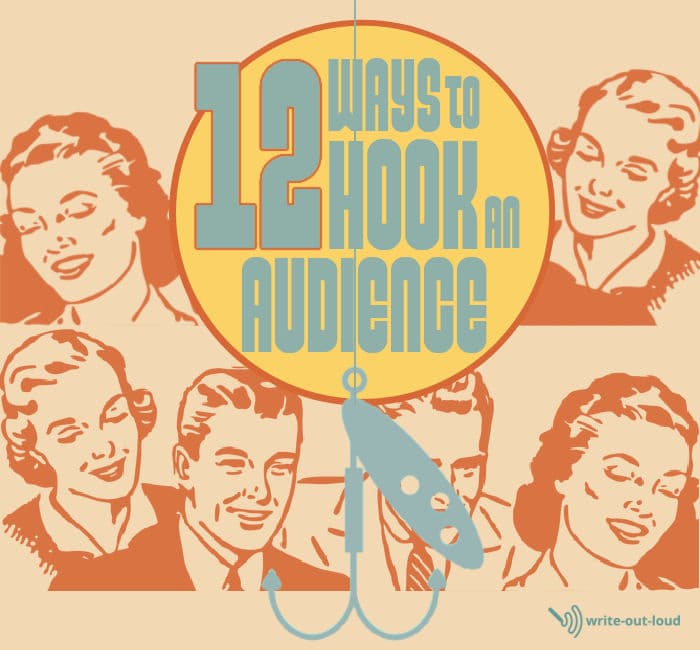
How to choose the right opener for your speech
The better way to make your choice of opener is after you have carefully considered who you are talking to and why you're talking to them.
One size does not fit all. Different audiences will respond differently. If you are giving the same speech multiple times think about what you may need to change to fit.
To work well your opening needs to be aligned with:
- the type of speech you're giving
- your main purpose for giving it
- your target audience and,
- their interests or needs
Both the hook * to catch their attention and your topic must be relevant to them. Unless they're a captive audience, they've come freely to listen to you and they're expecting something of value from you.
How are you going to let them know they're in the right place? Why should they listen? What are they going to get or gain through listening?
Out of all the different ways to open, what attention getter is absolutely the best way?
The only way I know to work out what is best is to go through each of them, and as you do, consider your audience. Make a short list of those you think might work then try them out before making your final choice.
* hook – an opening statement that immediately captures the audience's attention just like a well baited hook on a fishing line catches a fish.
Return to Top
1. Use imagination to create mind pictures
Ask the audience to use their imagination. Get them to build evocative compelling images in their minds. Make them large. Add vibrant color, sound and movement.
For example:
“Let's take a break. Make yourself comfortable. Now close your eyes for a moment. Take a deep breath, and you're there, in the place where you feel the most at ease, the place where all the tensions, all the demands of your normal everyday life disappear. Look around you. See it. Feel it. It's so good, it's perfect."
“Close your eyes. Take a deep breath and a moment to picture in your mind the people dearest to you, the people you feel you could not live without. Now when did you talk to them, or spend real time with them last?"
2. Use an item to build a connection
Choose an image or an object related to your speech, for instance a pair of shoes, to trigger interest and build a connection.
For example, if I were giving a speech on the lives of upper-middle class 19th century women I could open by holding up a pair of ornately decorated kid leather pumps.
“What's the name of the young woman who wore these? Listen. Can you hear the rustle of her silk skirts? And hear her heart beat bom-biddy-bom as the beau of the ball stepped her way? Would he, or wouldn't he ask her to dance?”
3. Ask a 'What if...?' rhetorical question
'What if...?' invites an audience to consider the possibilities of something becoming real. They can be positive somethings or negative, trivial or something that would have a significant impact if it came to pass.
The power of a 'what if...?' rhetorical question as an opener lies in the potency of the images and feelings it triggers. A well-chosen 'what if...?' will immediately have an audience wanting to hear the rest of your speech.
- "What if we don't find a way to successfully manage climate change?"
- "What if we really did solve the affordable housing crisis?"
- "What if questions of race and color ceased to matter?"
- "What if medicines were freely available to everybody who needed them?"
- "What if the person sitting next to you turned, looked into your eyes and said they loved you? Truly. Madly. Deeply."
4. Try a quotation from someone who's impacted your life in some way
To be effective a quotation doesn't have to be the clever quip or snippet of enduring wisdom: a famous quote from a well known person. It's origin could be personal, something someone important in your life said that's remained with you.
For example, my Mother answered all initial wails of outrage, pain or hurt from any of her five children with a command. "Breathe!" That was repeated, interwoven with encouraging asides, until whoever it was, was able to talk clearly and be understood. "It's OK.", she'd say. "Breathe. Come on. You can do it. Breathe. That's it. Keep going. Good."
Or I could use this line from one of my high school reports which read, "...with further maturity she should do well." (Thank you Mr Phillips. Your prediction was right on target.)
Or this from our son aged four as he watched me getting ready for another day of teaching: "When I grow up I'm going to wear pretty dresses and go to school just like you."
5. Use an interesting key fact
Choose an interesting key fact as an attention getting device: one of the most rarely known, or a shocking statistic from the body of your speech to open with.
For example: "Take a guess at what the most powerful and frequently used word is in the English language?
It's not one of those usually thought of candidates. Love? No. Money? Nope. Neither is it any member of your family... Mum, Dad, brother, sister, son, or daughter.
It's a three letter word, so common it's overlooked and taken for granted. 'The'. It's the humble 'the'."
(For more see this BBC article: Is this the most powerful word in the English language?
Or: "Between 2020/21 and 2021/2022, Americans consumed about 11 million metric tons of sugar, up from about 10 million metric tons in 2009/2010. Can you even begin to imagine the size of that sweet white mountain?"
(For more see: US sugar consumption statistics )
6. Share personal stories
Share a personal story related to your specific topic as the beginning of a speech. Done well, it lets the audience know you understand their situation and helps establish your credibility: your right to talk on the subject.
As an example here's the opening of a speech I gave about the impact of suicide on families and friends:
“One fine Spring day I biked home from school and found a policemen guarding our backdoor. Through it came sounds I'll never forget: my quiet Mother screaming. He said, "You can't go in."
I kicked him in the shins and did. It was the 15th of September, three days before my thirteenth birthday and my father was dead. Killed by his own hand. Suicide.”
(If you want to find out more about the speech and read it, it's here: After they're gone . It's an example persuasive speech using the five steps of Monroe's Motivated Sequence.)
7. Rhetorical questions
These are questions that although they are asked, they're never really intended to be answered by anyone other than the person asking them. * Their principal function is to act as a segue, or lead in, to what the person intends to say next. For instance, the first main point of your introduction.
Examples: "What if I were to say to you that there was no such thing as public speaking fear?"
"What do you think the main benefits of being able to speak up in public are?"
* Although there's bound to be someone in your audience who will. Be ready for them, and move on.
8. An empathetic question, aligning yourself with the audience and eliciting a response
These questions bring speaker and audience together, establishing a common ground, a mutual understanding, which is an effective way to ease into a speech. If your question 'works' you'll see heads nodding in agreement.
- "Have you ever experienced the butterflies in your stomach turning into a herd of rampaging elephants, just before you step up to give your presentation?"
- "Have you ever wanted a good day to never end?"
- "How often have you 'lost' your car in the supermarket car park?"
- "How often have you ever wanted to shout, NO? You want me to prepare a new presentation by tomorrow? NO. You want me to stay late, again? NO."
9. It's in the news
Take headlines from what's trending in media you know the audience will be familiar with and see.
Using those that relate to your speech topic as the opening of your speech is a good way to grab the attention of the audience. It shows how relevant and up-to-the-minute the topic is.
For example: "'Death toll soars to 76 in Florida after Hurricane Ian demolished entire communities.' 'Noru became a super typhoon in 6 hours. Scientists say powerful storms are becoming harder to forecast.' 'Hurricane Orlene strengthens into Category 4 storm as it heads toward western Mexico.'
Three front page headlines from CNN just today. Climate change. Let's do what we can."
10. This day in history
If you're giving a speech to celebrate a special birthday or an anniversary, consider using several carefully selected events that occurred on the same day as a speech opening. They could be either funny or serious, depending on the specific purpose of your speech. They're a great way to place the person in a much wider context and often with exalted company.
For example: "What do the 1863 National Thanksgiving Day proclamation by President Abraham Lincoln, National Boyfriend Day, and Gwen Stefani have in common with Joe? Yes, the 3rd of October! It's a great date made better by being Joe's birthday. And we say Gwen is truly privileged to have the same one as him."
11. Issue a challenge
Let the audience know first thing, at the beginning of the speech, what action you expect they'll be able to take by the time your presentation is complete. Then when you come to the final points, repeat the call to action, or challenge, as part of your closing statement.
For example: "I've a challenge for you. That's to sign up for our public speaking course. Right now you may not see yourself doing that. Public speaking? Me? I'd rather have a root canal done, without painkillers. However, by the end of the presentation...well, let's see. There's a first time for everything!"
Use a startling statement, a fact, or a series of facts, to jolt the audience into paying attention.
"Covid. We've had 1.06 million of us die in the US, so far. Today there are nearly 60,00 new cases. More mothers, fathers, friends, colleagues, children – people. People ill. People who might die. So why have we stopped wearing masks?"
For more: Google: Covid stats US
Other speech writing resources
- how to end a speech effectively : explanations with examples showing how to close a speech with impact
- how to write a speech : a detailed guide with examples covering audience analysis, planning, writing oral language, transitions, how to use an outline...
speaking out loud
Subscribe for FREE weekly alerts about what's new For more see speaking out loud

Top 10 popular pages
- Welcome speech
- Demonstration speech topics
- Impromptu speech topic cards
- Thank you quotes
- Impromptu public speaking topics
- Farewell speeches
- Phrases for welcome speeches
- Student council speeches
- Free sample eulogies
From fear to fun in 28 ways
A complete one stop resource to scuttle fear in the best of all possible ways - with laughter.

Useful pages
- Search this site
- About me & Contact
- Free e-course
- Privacy policy
©Copyright 2006-24 www.write-out-loud.com
Designed and built by Clickstream Designs

How to Start a Speech: 7 Tips and Examples for a Captivating Opening
By Status.net Editorial Team on December 12, 2023 — 10 minutes to read
1. Choosing the Right Opening Line
Finding the perfect opening line for your speech is important in grabbing your audience’s attention. A strong opening line sets the stage for the points you want to make and helps you establish a connection with your listeners.
1. Start with a question
Engage your audience from the very beginning by asking them a thought-provoking question related to your topic. This approach encourages them to think, and it can create a sense of anticipation about what’s coming next.
- “Have you ever wondered how much time we spend on our phones every day?”
2. Share a personal story
A relatable personal story can create an emotional connection with your audience. Make sure your story is short, relevant to your speech, and ends with a clear point.
- “When I was a child, my grandmother used to tell me that every kind deed we do plants a seed of goodness in the world. It was this philosophy that inspired me to start volunteering.”
3. Use a quote or a statistic
Incorporate a powerful quote or an intriguing statistic at the outset of your speech to engage your audience and provide context for your topic.
- “As the great Maya Angelou once said, ‘People will forget what you said, people will forget what you did, but people will never forget how you made them feel.'”
4. Make them laugh
Injecting a little humor into your opening line puts everyone at ease and makes your speech more memorable. Just make sure your joke is relevant and doesn’t offend your audience.
- “They say an apple a day keeps the doctor away, but if the doctor is cute, forget the fruit!”
5. Paint a mental picture
Draw your audience in by describing a vivid scene or painting an illustration in their minds. This creates an immersive experience that makes it easier for your audience to follow your speech.
- “Picture this: you’re walking down the beach, and you look out on the horizon. The sun is setting, and the sky is a breathtaking canvas of reds, oranges, and pinks.”
2. Using a Personal Story
Sharing a personal story can be a highly effective way to engage your audience from the very beginning of your speech. When you open your talk with a powerful, relatable story, it helps create an emotional connection with your listeners, making them more invested in what you have to say.
Think about an experience from your life that is relevant to the topic of your speech. Your story doesn’t have to be grand or dramatic, but it should be clear and vivid. Include enough detail to paint a picture in your audience’s minds, but keep it concise and on point.
The key to successfully using a personal story is to make it relatable. Choose a situation that your audience can empathize with or easily understand. For example, if you’re giving a speech about overcoming adversity, you could talk about a time where you faced a seemingly insurmountable challenge and overcame it.
Make sure to connect your story to the main point or theme of your speech. After sharing your experience, explain how it relates to the topic at hand, and let your audience see the relevance to their own lives. This will make your speech more impactful and show your listeners why your personal story holds meaning.
3. Making a Shocking Statement
Starting your speech with a shocking statement can instantly grab your audience’s attention. This technique works especially well when your speech topic relates to a hot-button issue or a controversial subject. Just make sure that the statement is relevant and true, as false claims may damage your credibility.
For example, “Believe it or not, 90% of startups fail during their first five years in the market.” This statement might surprise your listeners and make them more receptive to your ideas on how to avoid pitfalls and foster a successful business.
So next time you’re crafting a speech, consider opening with a powerful shocking statement. It could be just the thing to get your audience sitting up and paying full attention. (Try to keep your shocking statement relevant to your speech topic and factual to enhance your credibility.)
4. Using Humor
Humor can be an excellent way to break the ice and grab your audience’s attention. Opening your speech with a funny story or a joke can make a memorable first impression. Just be sure to keep it relevant to your topic and audience.
A good joke can set a light-hearted tone, lead into the importance of effective time management, and get your audience engaged from the start.
When using humor in your speech, here are a few tips to keep in mind:
- Be relatable: Choose a story or joke that your audience can easily relate to. It will be more engaging and connect your listeners to your message.
- Keep it appropriate: Make sure the humor fits the occasion and audience. Stay away from controversial topics and avoid offending any particular group.
- Practice your delivery: Timing and delivery are essential when telling a joke. Practice saying it out loud and adjust your pacing and tone of voice to ensure your audience gets the joke.
- Go with the flow: If your joke flops or doesn’t get the reaction you were hoping for, don’t panic or apologize. Simply move on to the next part of your speech smoothly, and don’t let it shake your confidence.
- Don’t overdo it: While humor can be useful in capturing your audience’s attention, remember that you’re not a stand-up comedian. Use it sparingly and focus on getting your message across clearly and effectively.

5. Incorporating a Quote
When you want to start your speech with a powerful quote, ensure that the quote is relevant to your topic. Choose a quote from a credible source, such as a famous historical figure, a well-known author, or a respected expert in your field. This will not only grab your audience’s attention but also establish your speech’s credibility.
For example, if you’re giving a speech about resilience, you might use this quote by Nelson Mandela: “The greatest glory in living lies not in never falling, but in rising every time we fall.”
Once you’ve found the perfect quote, integrate it smoothly into your speech’s introduction. You can briefly introduce the source of the quote, providing context for why their words are significant. For example:
Nelson Mandela, an inspirational leader known for his perseverance, once said: “The greatest glory in living lies not in never falling, but in rising every time we fall.”
When you’re incorporating a quote in your speech, practice your delivery to ensure it has the intended impact. Focus on your tone, pace, and pronunciation. By doing so, you can convey the quote’s meaning effectively and connect with your audience emotionally.
Connect the quote to your main points by briefly explaining how it relates to the subject matter of your speech. By creating a natural transition from the quote to your topic, you can maintain your audience’s interest and set the stage for a compelling speech.
In our resilience example, this could look like:
“This quote by Mandela beautifully illustrates the power of resilience. Today, I want to share with you some stories of remarkable individuals who, like Mandela, overcame obstacles and rose every time they fell. Through their experiences, we might learn how to cultivate our own resilience and make the most of life’s challenges.”
6. Starting with a Question
Opening your speech with a question can be a great way to engage your audience from the start. This strategy encourages your listeners to think and become active participants in your presentation. Your opening question should be related to your core message, sparking their curiosity, and setting the stage for the following content. Here are a few examples:
- For a motivational speech : “Have you ever wondered what you would do if you couldn’t fail?”
- For a business presentation : “What’s the biggest challenge your team faces daily, and how can we overcome it?”
- For an educational talk : “How does the way we use technology today impact the future of our society?”
When choosing the right starting question, consider your audience. You want to ask something that is relevant to their experiences and interests. The question should be interesting enough to draw their attention and resonate with their emotions. For instance, if you’re presenting to a group of entrepreneurs, gear your question towards entrepreneurship, and so on.
To boost your question’s impact, consider using rhetorical questions. These don’t require a verbal response, but get your audience thinking about their experiences or opinions. Here’s an example:
- For an environmental speech : “What kind of world do we want to leave for our children?”
After posing your question, take a moment to let it sink in, and gauge the audience’s reaction. You can also use a brief pause to give the listeners time to think about their answers before moving on with your speech.
7. Acknowledging the Occasion
When starting a speech, you can acknowledge the occasion that brought everyone together. This helps create a connection with your audience and sets the stage for the rest of your speech. Make sure to mention the event name, its purpose, and any relevant individuals or groups you would like to thank for organizing it. For example:
“Hello everyone, and welcome to the 10th annual Charity Gala Dinner. I’m truly grateful to the fundraising committee for inviting me to speak tonight.”
After addressing the event itself, include a brief personal touch to show your connection with the topic or the audience. This helps the audience relate to you and gain interest in what you have to say. Here’s an example:
“As a long-time supporter of this cause, I am honored to share my thoughts on how we can continue making a difference in our community.”
Next, give a brief overview of your speech so the audience knows what to expect. This sets the context and helps them follow your points. You could say something like:
“Tonight, I’ll be sharing my experiences volunteering at the local food bank and discussing the impact of your generous donations.”
Frequently Asked Questions
What are some effective opening lines for speeches.
A powerful opening line will grab your audience’s attention and set the stage for the rest of your speech. Some effective opening lines include:
- Start with a bold statement: “The world needs your creativity now more than ever.”
- Share a surprising fact: “Did you know that the average person spends (…) years of their life at work?”
- Pose a thought-provoking question: “What would you attempt to do if you knew you could not fail?”
- Tell a short, engaging story: “When I was 10 years old, I discovered my passion for baking in my grandmother’s kitchen.”
Can you provide examples of engaging introductions for speeches?
- Use humor: “As a kid, I believed that 7 pm bedtime was a form of torture. Now, as an adult, I find myself dreaming of 7 pm bedtime.”
- Share a personal experience: “On a trip to Italy, I found myself lost in the winding streets of a small village. It was there, amidst my confusion, that I stumbled upon the best gelato I’d ever tasted.”
- Use an analogy: “Starting a new business is like taking a journey into the unknown. There will be challenges to overcome, and you’ll need resilience, determination, and a strong compass.”
Which speech styles can make a powerful impact on the audience?
Different speech styles will resonate with different audiences. Some styles to consider include:
- Inspirational: Motivate your audience to take action or overcome challenges.
- Storytelling: Share personal experiences or anecdotes to illustrate your points and keep listeners engaged.
- Educational: Provide useful information and insights to help your audience learn or grow.
- Persuasive: Present a compelling argument to convince your audience to adopt a particular perspective or take specific action.
How do successful speakers establish a connection with their listeners?
Establishing a connection with your listeners is key to delivering an impactful speech. Some ways to connect with your audience include:
- Show empathy: Demonstrating understanding and concern for your audience’s feelings and experiences will generate a sense of trust and connection.
- Be relatable: Share personal stories or examples that allow your audience to see themselves in your experiences, thus making your speech more relatable.
- Keep it genuine: Avoid overrehearsing or coming across as scripted. Instead, strive for authenticity and flexibility in your delivery.
- Encourage participation: Engaging your audience through questions, activities, or conversation can help build rapport and make them feel more involved.
What are some techniques for maintaining a friendly and professional tone in speeches?
To maintain a friendly and professional tone in your speeches, consider these tips:
- Balance humor and seriousness: Use humor to lighten the mood and engage your audience, but make sure to also cover the serious points in your speech.
- Speak naturally: Use your everyday vocabulary and avoid jargon or overly formal language when possible.
- Show respect: Acknowledge differing opinions and experiences, and treat your audience with courtesy and fairness.
- Provide useful information: Offer valuable insights and solutions to your audience’s concerns, ensuring they leave your speech feeling more informed and empowered.
- Effective Nonverbal Communication in the Workplace (Examples)
- 2 Inspiring Examples of Artist Bio with Tips
- 46 Examples of a Resume Opening Statement (Perfect Introduction)
- 6 Examples of Excuse Letter for Work Absence (with Tips)
- How to Resolve Employee Conflict at Work [Steps, Tips, Examples]
- 20 Examples of Subject Line for a Job Application (with Tips)

7 ways for opening a speech! The ideal speech introduction to grab your audience’s attention
Maybe you know this: you may or must give a speech, but how do you start? Whether you’re giving a speech as an employer or to your colleagues, or you’re an external keynote speaker, the principles are always the same. Likewise, your preparation is not much different: whether it’s a keynote at a kick-off event , the festive speech at the company Christmas party , a motivational speech at a team event or even a laudatory speech at an awards ceremony – the search for the right begining should not be left to chance.
How do you get your audience’s attention so that they want to listen and can follow you easily? How do you sound interesting? In this article you will get the necessary tips for your ideal start for your next speech to inspire your audience. I have collected these speech introductions and examples in my work in the field of public speaking as a presenter and keynote speaker in front of over 5 million people.
Why is the beginning, i.e. the first few minutes of a presentation, so important? This is where the first impression is being made. Your audience intuitively decides within a few seconds whether they like the speaker and want to follow. After that, you still have up to three minutes to pick up your audience with the content of your speech.
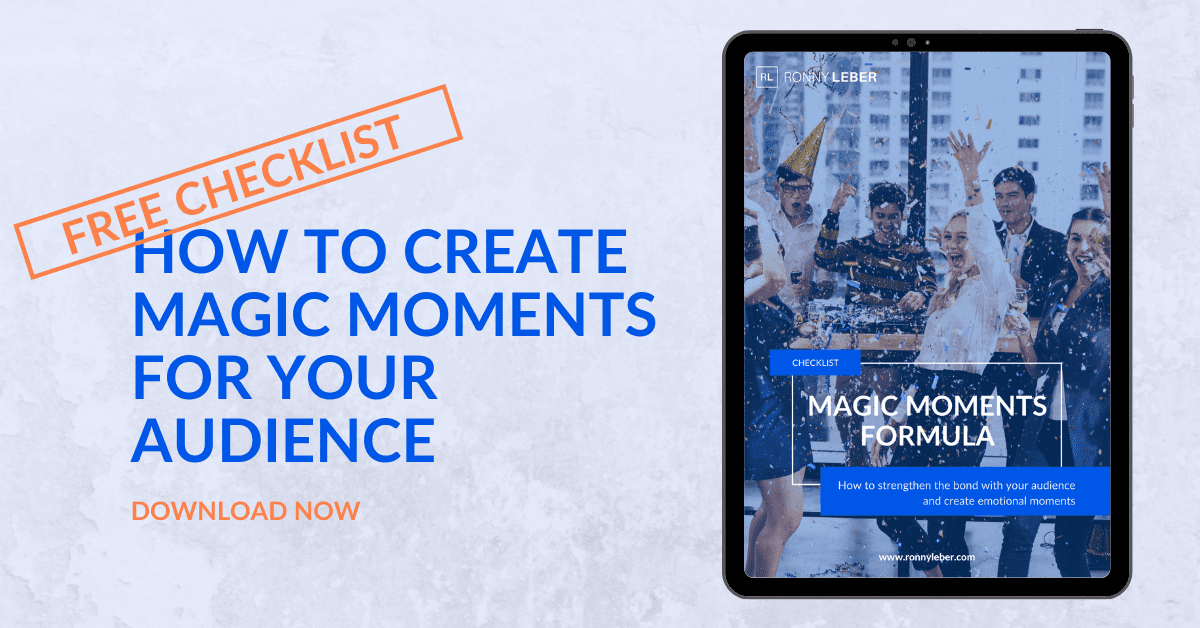
Stop guessing how to WOW your audience!
We will send you our secret ingredients to WOW your audience for free! In the MAGIC MOMENTS FORMULA you can learn how to take any audience of any size and create a deep emotional experience for them in order to create a deeper emotional bond with you and your brand.
The first impression is crucial for further success
There’s a saying that goes, “ There’s no second chance for a first impression. ” It takes between 100 milliseconds and 7 seconds for your audience to get the same impression of you. If you as a speaker fail to make that first impression, no matter how impressive your speech, it will be very difficult to pick up your audience.
US comedian Jerry Seinfeld , one of the most famous American comedians of the 90s, said that his fame only gives him a starting bonus for the first three minutes – at the latest then he has to deliver. If you don’t enjoy the celebrity bonus in your speeches, that means you have to deliver right from the get go to win over your audience.
Requirements for the ideal introduction for your speech
Before you can wow people as a speaker and give any thought to content, you need to set the stage. If you want to give a good speech and move your audience from A to B, two things are essential: you need to know where you want to go and where your audience is coming from .
Know the outcome of your speech
If you don’t know in which direction you want to move your audience, then no amount of tips will get you there. So before you tinker with the ideal introduction, you need to be clear about what your outcome is .
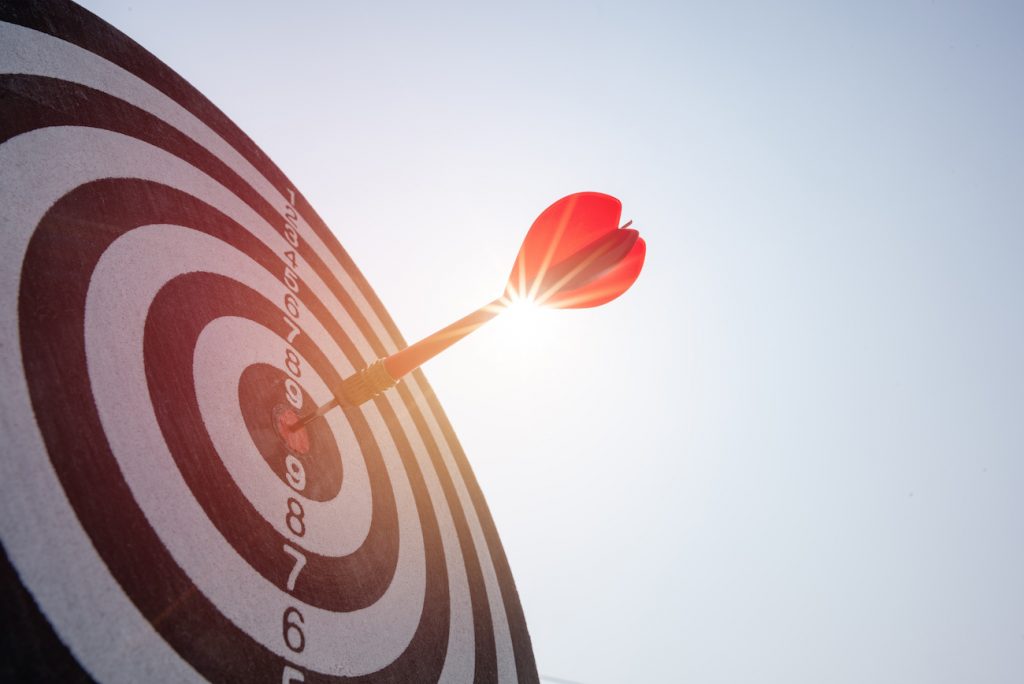
What feeling do you want the audience to have when you leave the stage? What impression do you want to convey as a speaker? Even more public speaking tips you can find here.
Know your audience members
If you want to catch a fish, you have to use a bait that tastes good to the fish, not to the fisherman . The same applies to presentations: who decides what is a top speech? That is, of course, in the eye of your audience. Therefore, it is all the more important to know who the people are, listening to your speech.

An American proverb says that your audience doesn’t care how much you know until they know how much you care. Your audience won’t pay attention to you until they see that your speech is relevant to them. As a speaker, do you bring examples and tips and answer questions in your main points that matter to the audience? Do your main ideas strike a cord?
Tip: Try to find out as much as possible to know in advance what moves your audience and why people are here today. If you have the opportunity, use the time for successful networking and listen to their needs.
The goal of an ideal introduction to your speech
Only after you know your outcome and your audience you can focus on how to start your presentation, because now you know as a speaker in which direction your ship should sail. If you want to give a speech, you need to get your audience interested in you and your main points. For this to happen, you need the attention of your audience.
Speaker Tip: First create attention , then develop interest in your message and your main points to make it worth listening for your audience.
Giving a speech: seven perfect speech introductions
Now let’s look at tips and examples of how you as a speaker can inspire your audience. These tips should give you a guideline from where you can successfully transition from your chosen introduction to the main part and final part of your speech.
1. He who asks, leads – starting with a question
An elegant way to begin a speech is with a question . The goal is to engage your listener directly in your opening and generate interest. In order for the question to be effective, it must be tailored to your target audience. The question may be provocative, surprising or even make you smile, but it must be relevant.

For example, if you’re speaking to a group of retirees, a question like “Which one of you went to a disco last weekend?” would be just as out of place as asking a group of Wall street brokers “Which one of you has been involved in stocks?”. Your audience needs to feel like you know who you’re dealing with.
“Who remembers what they did last Saturday night?” was an opening I chose many years ago when giving a speech. Of course, after that, there was a story about my Saturday night that fit right in with the theme of my speech. People were immediately involved and everyone was thinking. Because just about everybody did something last Saturday and so it was relevant… even if many didn’t even remember it.
With questions that fit the topics, you are sure to get the attention of the participants. However, always pay attention to what you trigger in your audience with a question and, if requested, also provide the appropriate answer.
Another speaking tip: When you ask a question, give your audience time to respond . Whether out loud, with a show of hands, or silently, people need time for what you say to have an impact. Of course, questions can also be used during your speech.
2. Start your speech with a quote
Using the words of another person in your speech is a proven way. The art of building a good speech is to pick up your audience where they are. A pointed quote that gets to the heart of your ideas or the occasion is the basic premise for choosing someone else’s statement as your lead-in. If people are familiar with the name of the person you are quoting, it gives you added credibility as a speaker.
Very similar to a quote is using a proverb to start your speech. Again, there is often a deeper wisdom behind it. Link this to the idea of your speech and you have a great introduction.
Again, I’ll give you an example from my own experience when I was asked to give a presentation on the topic of corporate mission statements many years ago. I decided to start with a quote, but the number of quotes on this topic are manageable. However, the corporate mission statement compares very well with the soul for people, and so on this occasion I found a quote on the subject of the soul and then drew the analogy with the corporate mission statement. “Outside the box” solutions are also the speaker’s friend.
3. Inspire your audience with storytelling
A particularly powerful way to start is to share a story or personal real life experience with your audience at the beginning of your presentation. With a personal story, you create compelling moments and build an emotional connection with your audience. However, this is also where the biggest danger lies: your story must absolutely correspond to the facts and at the same time should have a connection to the topic of the event. The audience has a good nose for it, if you serve them a “suitably made” story.
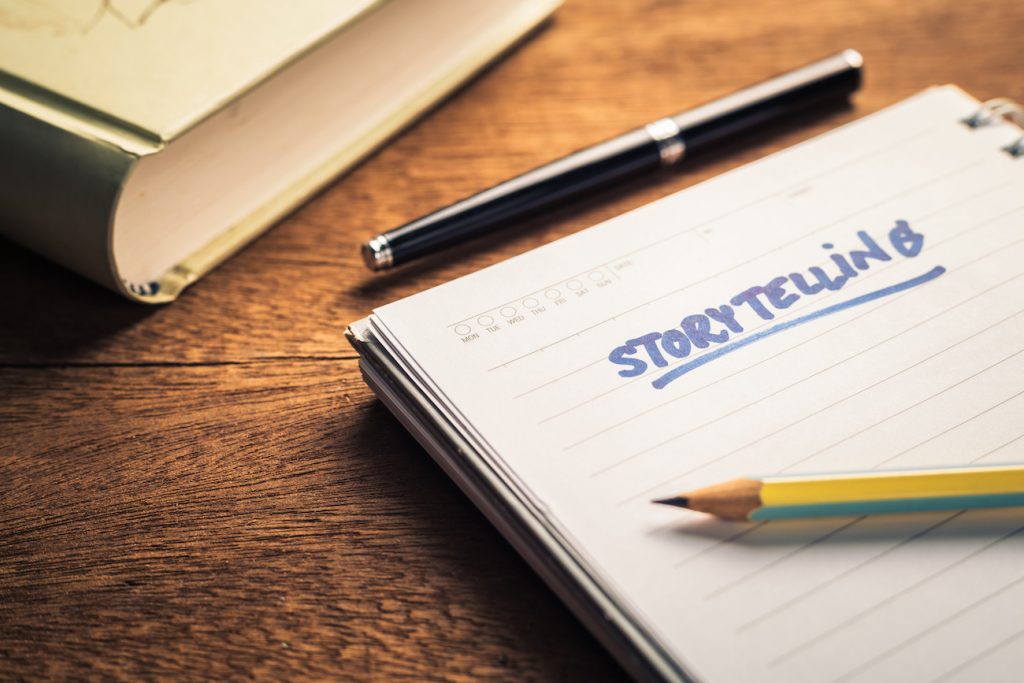
Of course, storytelling is not limited to stories you have experienced yourself. You can also draw on a current or even historical event. Important, as mentioned above, is the connection to the goal of your presentation. Also, make sure that you start right in the relevant event and do not begin with Adam and Eve. Especially extroverted people like to get into narration and then it can happen that you lose the drive to your actual presentation and your audience is no longer on the point.
One of my stage coaching clients, for example, took his audience into a situation right at the beginning of his speech when he was at the start of his first triathlon. He immediately built up a tension, because he put his audience directly into it instead of talking about preparation and planning for the triathlon. Because he also found the right tone, the speech went down great. Bonus tip for your speech: Stories absolutely need to be rehearsed and tailored to your audience and the occasion. This does not mean, as already mentioned, that you add things, but that you leave out unnecessary things. Don’t just tell from memory, but really practice.
4. Start with an open loop
Starting with an open loop is something like the supreme discipline. Here, you start with a story, but don’t finish telling it until the end of your speech . This type of introduction is certainly a bit unusual and, in my opinion, more suitable for experienced speakers, especially to keep the tension high.
You start with the open loop in the same way as with storytelling and take your audience along until the point where the tension is at its highest. Instead of the resolution, you lead into the topic of your speech and then come to the main part, where the content is presented with further examples. Only at the end do you pick up the ball of your introductory story again and close the open loop.
As an example, I start one of my keynote speeches with such an open loop: I take the audience on my experience at the New York City Marathon. Since my preparation for it was far from ideal due to injuries, I wasn’t sure until the start how far I would run that day. My speech started with the thoughts going through my head at the start, with my uncertainty but also anticipation. The start of the marathon was then the Open Loop, which I only resolved at the end of the speech.
5. Enchant the audience with parables
A parable is a very short to short story which might not even have a plot of its own. While a parable can be told with action, as if something has actually taken place, it can also be about something hypothetical: “Imagine…” or “Suppose…”. In both cases, the point is that we want to make a connection to the content.
The purpose of parables is to pick up the audience as they enter your presentation and provide an emotional experience that immediately introduces them to the topic through your words.
6. Facts, figures and statistics as an introduction for the speech
The FFS introduction is particularly useful if you have facts, figures or statistics that are not familiar to your audience and are also unusual. In addition, it must of course fit your topic and possibly support your thesis. A personalized statistic works best to meet your audience’s needs.
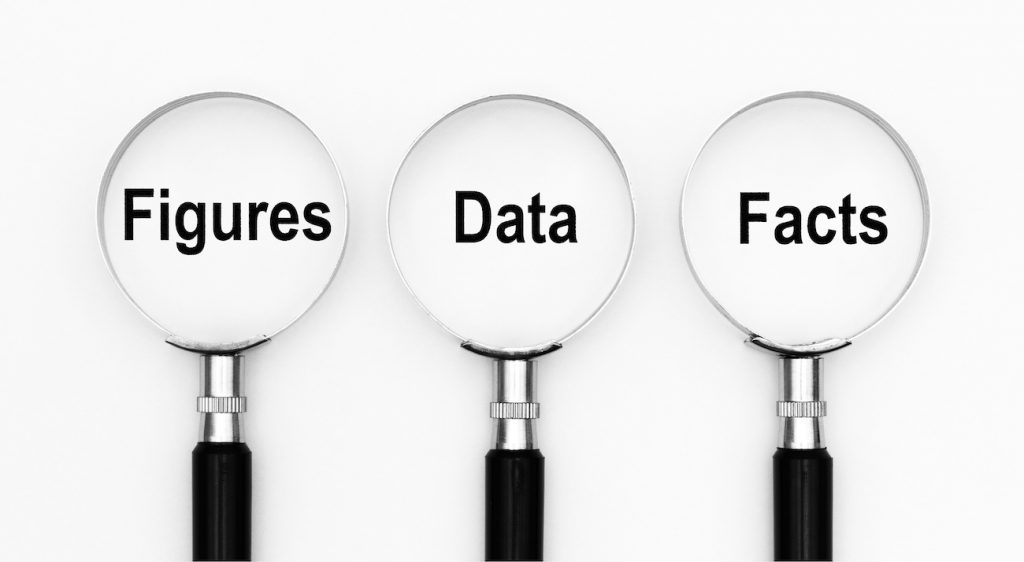
When we were designing the outline for one of my Executive Legacy Coaching clients’ investor pitch, we made a conscious decision to start with a number that would probably come as a surprise to many listeners. To back up the pain point that his product solves, he asked the panel how much they thought that an unhappy employee costs a company per year. Starting with that number was so effective because the audience’s estimates were all substantially lower than the true number, creating an a-ha effect.
7. Looking back
Another way to start your speech is with a look back . This variant is particularly suitable if you are to give a speech on the occasion of an anniversary or birthday. In your preparation, you should pay special attention to who is sitting in your audience: what connection do they have to the person or the company or the occasion and, above all, have they experienced the period themselves.
Some time ago, I had the privilege of being on stage at a company’s 20th anniversary. In order to give the audience as emotional an experience as possible, I first had to find out who was in the audience. Have people lived through these last 20 years, and are they likely to remember the moment from 20 years ago? Since my audience was mostly over 35 years old I assumed that was the case. Thus I dove into the world of 20 years ago: how did the world look and what moved people at the time? Immediately the people were in the emotions of the memories and from that I could then draw a bow to the company anniversary: “much has changed, but one thing has remained the same…”.
Giving a speech: here’s what you should avoid when getting started
Jokes are for comedians.
There are talented joke tellers and there are those who always flub the punch line. If you feel uncomfortable in the role of the joker, don’t do it. However, that doesn’t mean you can’t spice up the introduction with a little humor. Humor arouses positive emotions and loosens the atmosphere. A humorous introduction, which also works without a joke, signals to the participants that the event will not be dry as dust and that it is worth staying for.
Bonus tip: Humor is different in different regions and works best when you approach your audience with respect and humility.
Stay away from provocative introductions
A provocative introduction is like riding on a razor blade: very dangerous. You have to have an incredible ace up your sleeve to win your audience back. As a rule, I would strongly advise you not to use provocative introductions. If your audience perceives you as an unsympathetic person, no matter how ingenious the content of your speech, it will not bring the desired success.
Start with an apology
Some insecure speaker starts his speech with an apology for his insecurity or God knows what else. Please don’t do that. For one thing, the audience usually doesn’t notice it anyway, and for another, it immediately takes something away from your first impression. You might get sympathy for it, but in the rarest cases you will get the attention for your speech.

One of the most important tips I once received was that your audience wants you to win . That’s right, you read that correctly. Your audience wants you to be good. No one sits in the audience hoping for a boring speaker to come on now. Your audience wants you to do your job well. If you feel anxiety on the way to the stage, keep reading.
The way to the stage and the first seconds
The key to a perfect introduction lies not only in the preparation for your speech, but also in the emotional preparation in the moments before public speaking. Especially if you are nervous or even feel speech anxiety , it is even more important that you, to present convincingly, are in an ideal state.
Take a deep breath just before your performance, send positive emotions to your audience and off you go. Many speakers also like to take index cards with their notes to be prepared in case of an emergency. The phrase for the introduction as well as for the conclusion I would always write in full. For the main points, keywords are enough here.
When you finally arrive on stage, at first be aware of your audience . Before you begin, start with eye contact and confident body language to radiate stage presence . Only then, when you feel the attention of your audience, you start to talk. This confidence will automatically boost your credibility.
Bonus tip: if you’re unsure about your voice, a little voice training will help.
The ideal start for your virtual speech
Of course, the principles for your ideal start also apply at virtual events. So if you hold a webinar or a virtual presentation or are on stage at a hybrid event , nothing will change in the structure of your preparation. The main point in the virtual space is that you have to speak in front of the camera and this should be practiced. The specific elements of structuring your presentation stay the same.
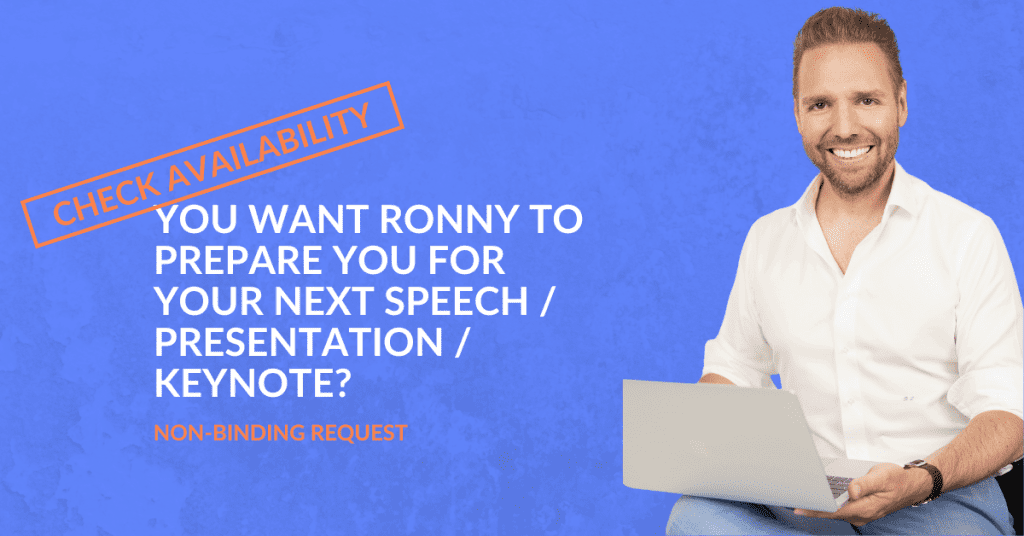
Ask Ronny to coach you for your next performance
Click on the button and send a non-binding request to Ronny to be your coach for your next keynote, speech or presentation.
Feeling ready for your next speech?
In this article you have learned how to start your speech in an ideal way. Do you already have an idea which structure you like best? Remember that you always start with your outcome and your audience before you create a thread for your presentation.

The tone makes the music. Former American writer Maya Angelou summed it up this way: “Your audience won’t remember exactly what you said, but they’ll always remember how it made them feel.” Whatever the occasion, take your audience on an emotional journey.
If you feel that you still need help for your next speech or keynote , feel free to contact me or just write me an e-mail ! Together many things are easier.
Which introduction appeals to you the most? Which start to a speech have you learned about here and would like to try out for your next performance? Please leave a comment below and share this article with someone who you think will profit from it. All the best for your next speeches.
There is no second chance for a first impression . The first impression is created in the first few seconds of perception and is crucial to whether your audience perceives you as likeable or unlikeable. If you mess up the first impression, the next few minutes will be a steep uphill climb to get the audience back on your side.
First, take three deep breaths and consciously put a smile on your face. Stand up straight, shoulders back, head up and visualize your audience and your goal. The important thing here is to move as quickly as possible from an internal focus (thinking about you) to an external focus (thinking about your audience). Imagine how your audience will benefit from your speech. For even more tips, I recommend you read my blog post Persuasive presentations: 3 Steps to Your Ideal State in Front of an Audience.
Ideally, you were introduced by a presenter who has also given some interesting background information about you to the audience. However, it always makes sense to leave nothing to chance here and, on the one hand, to discuss your introduction with the presenter upfront and, on the other hand, to include the most important points in your speech. I would always start with an introduction into the topic to get the audience interested and then introduce myself. The best way to find the right introduction is to read this article.
How useful was this post?
Click on a star to rate it!
Average rating 4.3 / 5. Vote count: 46
No votes so far! Be the first to rate this post.
Similar Posts

How to improve your stage presence right now! 7 simple exercises that immediately make you shine on stage in 2024!
Stop guessing how to WOW your audience!The first impression is crucial for further successRequirements for the ideal introduction for your speechKnow the outcome of your speechKnow your audience membersThe goal of an ideal introduction to…

How stage coaching can help you to inspire your audience

Use your time : 8 tips on how to make the most of your time

The golden dozen of video conference tips that will help you win every video conference!

Virtual presentation made easy – with the 9 best expert virtual presentation tips

Successful networking – the turbo booster for your business
Leave a reply cancel reply.
Your email address will not be published. Required fields are marked *
Save my name, email, and website in this browser for the next time I comment.

- About Ronny
- Our Clients
- Our Core Values
- STAGE HERO Coaching
- Homestudio Resources
© 2024 RLE Business GmbH. All rights reserved | Imprint | Privacy Policy

Session expired
Please log in again. The login page will open in a new tab. After logging in you can close it and return to this page.
INQUIRE NOW
Request Ronny as a keynote speaker for your next event without obligation!
CHECK AVAILABILTY
Send us a non-binding inquiry for Ronny to coach you for your next keynote, speech or presentation!
Send us a non-binding request for Ronny as host for your next event!
STOP GUESSING HOW TO WOW YOUR AUDIENCE
Join our e-mail list for free to get the MAGIC MOMENTS FORMULA for free!
STOP GUESSING WHICH TECH TO USE IN YOUR HOME STUDIO
Join our e-mail list for free and we will send you the newest HOME STUDIO ASSISTANT checklist directly to your inbox. Each item has been carefully selected.
STOP GUESSING WHO THE RIGHT KENOYTE SPEAKER FOR YOUR EVENT IS
Join our e-mail list for free and get your 18-page KEYNOTE SCOUT-checklist on how to find the ideal keynote speaker for your event
STOP GUESSING ABOUT YOUR IDEAL EVENT HOST
Join our e-mail list for free and get your free EVENT HOST SCOUT - checklist to find the ideal event host“.
YES! I'M IN!
Join our e-mail list for free to get inspiring tips for speakers, presenters and event organizers!

Want to create or adapt books like this? Learn more about how Pressbooks supports open publishing practices.
8 Opening a Speech: Get Their Attention from the Start!

Get the audience’s attention, or the rest of your speech is a waste. I mean it! Most people spend the majority of their speech preparation time working on the body of their speech and then they tack on an opening and a closing last minute.
The opening and closing deserve the most attention. Why? If you don’t get the audience’s attention and get them to pay attention to you instead of… the thoughts in their heads, their grocery lists, their neighbors, their social media…then all the rest of your brilliant content is wasted because they will never hear it. Lisa Marshall of Toastmasters International stresses the opening words are so important that “I spend 10 times more time developing and practicing the opener than any other part of the speech.”
Look at the description of Person A and Person B and tell me which person you like more.
Person A envious, stubborn, critical, impulsive, industrious, and intelligent
Person B intelligent, industrious, impulsive, critical, stubborn, and envious
If you are like most people, you have a preference for Person B. This illustrates a study by Solomon Ashe. He had subjects rate these two people using a string of descriptive words. Now look back at the descriptions. Look closely and you will notice they are the same words in a different order. Most people put the most emphasis on the first three words in determining how they will create the person. Like Asche’s subjects, your audience will be evaluating those first three words. Let’s bring it back around to speechmaking. The first sentence out of your mouth is crucial and the first three words are especially important.
I am sure you are not surprised to know that people form opinions quickly. To prove this, researchers showed subjects either a 20-minute clip of a job applicant or a 20-30 second clip of a job applicant. They were asked to rate the person on likeability and self-assurance. People were able to form an opinion in under thirty seconds. Not only that but they were able to form the same opinions from a 30-second clip as a 20-minute exposure.
The Battle for Attention
Remember that every piece of content in our modern era is part of an attention war. It’s fighting against thousands of other claims on people’s time and energy. This is true even when you’re standing on a stage in front of a seated audience. They have deadly distracters in their pockets called smartphones, which they can use to summon to their eyes a thousand outside alternatives. Once emails and texts make their claim, your talk may be doomed. And then there’s that lurking demon of modern life, fatigue. All these are lethal enemies. You never want to provide someone with an excuse to zone out. You have to be a savvy general directing this war’s outcome. Starting strong is one of your most important weapons. Chris Anderson, TED Talks, The Official TED Guide to Public Speaking.
“People don’t pay attention to boring things,” according to John Medina, author of Brain Rules, “You’ve got 30 seconds before they start asking the question, ‘Am I going to pay attention to you or not?'” It is important to get your audience’s attention right away. In this chapter, I will share with you several ways to win the war for attention and to start your speech right. I will show you the basic opening and closing structure of speeches and give you many examples of what that looks like. A speech, like an airplane, needs a good take-off and a good landing. Now it’s time to prepare to have a strong take-off and learn everything that goes into a speech introduction. This chapter is full of examples from a variety of talks. I included quotes from those introductions, but I also included links to each of those talks hoping you will be interested enough to want to listen.
Ways to Start a Speech
Chris Anderson likens this to battle. “First there is the 10-second war: can you do something in your first moments on stage to ensure people’s eager attention while you set up your talk topic? Second is the 1-minute war: can you then use that first minute to ensure that they’re committed to coming on the full talk journey with you?”
When thinking about your speech, spend a lot of time thinking about how to win the battle for their attention. Your introduction should make your audience want to put down their phones and listen. Your introduction should be so compelling they stop their wandering minds and turn their thoughts to you and you alone. Your introduction should start with three strong words where they form a strong opinion of you and your speech. Let me share how to accomplish this.
Capturing the audience through the story is one of the most powerful ways to start a speech. A story engages the brain in powerful ways and causes the audience’s brains to sync with the speakers. A well-told story will allow the audience to “see” things in their mind’s eye and to join the speaker’s emotions.
Watch this clip by Ric Elias for how he begins his speech with a powerful story. Particularly notice his first four words, “Imagine a big explosion.”
Imagine a big explosion as you climb through 3,000 ft. Imagine a plane full of smoke. Imagine an engine going clack, clack, clack. It sounds scary. Well, I had a unique seat that day. I was sitting in 1D. I was the only one who could talk to the flight attendants. So I looked at them right away, and they said, “No problem. We probably hit some birds.” The pilot had already turned the plane around, and we weren’t that far. You could see Manhattan. Two minutes later, three things happened at the same time.
Ric Elias, Three Things I Learned While My Plane Crashed.
Consider these other examples and notice how the speaker uses a story.
More powerful introductions using story:
I love you, I believe in you and it’s going to be OK. The three things that I needed to hear three years ago when I felt more abandoned than ever. I remember that day as if it happen this morning. It was Sunday and I had just woken up early at a brisk 12:30 in the afternoon. Ryan Brooks, Honesty, courage, and the importance of brushing your teeth. When I was nine years old I went off to summer camp for the first time. And my mother packed me a suitcase full of books, which to me seemed like a perfectly natural thing to do. Because in my family, reading was the primary group activity. And this might sound antisocial to you, but for us, it was really just a different way of being social. You have the animal warmth of your family sitting right next to you, but you are also free to go roaming around the adventureland inside your own mind. And I had this idea that camp was going to be just like this, but better. Susan Cain. The Power of Introverts. I grew up to study the brain because I have a brother who has been diagnosed with a brain disorder: schizophrenia. Jill Bolte Taylor, My Stroke of Insight. A few years ago, I got one of those spam emails. I’m not quite sure how, but it turned up in my inbox, and it was from a guy called Solomon Odonkoh. James Veitch This is What Happens When You Reply to Spam Email. Eleven years ago, while giving birth to my first child, I hemorrhaged and was transfused with seven pints of blood. Four years later, I found out that I had been infected with the AIDS virus and had unknowingly passed it to my daughter, Ariel, through my breast milk, and my son, Jake, in utero. Elizabeth Glaser, Address to the 1992 Democratic National Convention.
Good stories immediately set the stage and introduce you to the place and to the people. Doing this helps your brain can form a structure where the story takes place. It helps you see the story unfold in your mind. If you need help starting a story, Vanessa Van Edwards suggests these prompts:
- Once upon a time.
- I’m here for a reason, and it’s an interesting story.
- The best thing that ever happened to me was.
There is an entire chapter on the Power of Story that can be found here.
Humor is a rubber sword – it allows you to make a point without drawing blood. – Mary Hirsch
When Family Guy’s Seth MacFarlane spoke at Harvard Commencemen t in the rain, he started with “There’s nowhere I would rather be on a day like this than around all this electrical equipment.” People laughed, people smiled, and the speech was off to a strong start. Humor works because it gives the audience a hit of the feel-good hormone dopamine. That is … if you are funny. If you decide to use humor, make sure you are funny. Test your humor on honest friends. In addition, the humor you use should fit your personality and your audience. Be warned, some groups would find humor inappropriate, do your research.
Watch this clip for how Tshering Tobgay begins his speech with humor.
In case you are wondering, no, I’m not wearing a dress, and no, I’m not saying what I’m wearing underneath. (Laughter) This is a go. This is my national dress. This is how all men dress in Bhutan. That is how our women dress. Like our women, we men get to wear pretty bright colors, but unlike our women, we get to show off our legs. Our national dress is unique, but this is not the only thing that’s unique about my country. Our promise to remain carbon neutral is also unique, and this is what I’d like to speak about today, our promise to remain carbon neutral.
Tshering Tobgay, This Country Isn’t Just Carbon Neutral–Its Carbon Negative.
More powerful introductions using humor
I didn’t rebel as a teenager. I started late and was still going at it the summer I turned thirty. I just became an American citizen, I divorced my husband, I got a big tattoo of a bat on my arm, and I joined a New York City punk band. Danusia Trevino, Guilty I need to make a confession at the outset here. A little over 20 years ago, I did something that I regret, something that I’m not particularly proud of. Something that, in many ways, I wish no one would ever know, but that here I feel kind of obliged to reveal. In the late 1980s, in a moment of youthful indiscretion, I went to law school. Dan Pink, The Puzzle of Motivation. It is really interesting to be a woman and to get to 45 and to not be married yet and to not have kids, especially when you have pushed out your fifth kid on television. Tracee Ellis Ross, 2017 Glamour Woman of the Year. I am not drunk …but the doctor who delivered me was.” (reference the shake she has due to a botched medical procedure at birth causing her cerebral palsey). Maysoon Zayid, I’ve Got 99 Prolbems and Cerebral Palsey is Not One of Them .
Salutation followed by humor
Oh boy, thank you so much, thank you so much. Thank you, President Cowan, Mrs. President Cowen; distinguished guests, undistinguished guests, you know who you are, honored faculty and creepy Spanish teacher. And thank you to all the graduating Class of 2009, I realize most of you are hungover and have splitting headaches and haven’t slept since Fat Tuesday, but you can’t graduate ’til I finish, so listen up. When I was asked to make the commencement speech, I immediately said yes. Then I went to look up what commencement meant which would have been easy if I had a dictionary, but most of the books in our house are Portia’s, and they’re all written in Australian. So I had to break the word down myself, to find out the meaning. Commencement: common, and cement, common cement. You commonly see cement on sidewalks. Sidewalks have cracks, and if you step on a crack, you break your mother’s back. So there’s that. But I’m honored that you’ve asked me here to speak at your common cement Ellen DeGenres, Commencement Speech at Tulane. Well, thank you. Thank you Mr. President, First Lady, King Abdullah of Jordan, Norm, distinguished guests. Please join me in praying that I don’t say something we’ll all regret. That was for the FCC. If you’re wondering what I’m doing here, at a prayer breakfast, well so am I. I’m certainly not here as a man of the cloth, unless that cloth is — is leather. Bono at the 54th annual National Prayer Breakfast.
Starting your speech by sharing a little-known fact, can be powerful. For this to fully work, you need to have the audience’s attention from the very first word. Read on for how these speakers started strong.
Powerful introductions using facts
Sadly, in the next 18 minutes when I do our chat, four Americans that are alive will be dead from the food that they eat. Jamie Oliver, Teach Every Child About Food. So I want to start by offering you a free, no-tech life hack, and all it requires of you is this: that you change your posture for two minutes. Amy Cuddy, Your Body Language May Shape Who You Are. Okay, now I don’t want to alarm anybody in this room, but it’s just come to my attention that the person to your right is a liar. (Laughter) Also, the person to your left is a liar. Also the person sitting in your very seats is a liar. We’re all liars. What I’m going to do today is I’m going to show you what the research says about why we’re all liars, how you can become a lie spotter and why you might want to go the extra mile and go from lie spotting to truth seeking, and ultimately to trust building. Pamela Meyer, How to Spot a Liar. You will live 7.5 minutes longer than you would have otherwise, just because you watched this talk. Jane McGonigal. The Game That Can Give You Ten Extra Years of Life. There are 900,000 divorces in the United States of America every year. Fewer than 10% of them ever talked to anybody about their relationship. So why would you need a science? Well, we need a science to develop effective treatment and understanding of how to make love work. Why? Why should we care about having great relationships? Well, it turns out that in the past 50 years, a field called social epidemiology has emerged, and it shows that great friendships, great love relationships between lovers and parents and children lead to greater health – mental health as well as physical health – greater wealth, greater resilience, faster recovery from illness, greater longevity – if you want to live 10 to 15 years longer, work on your relationships, not just your exercise – and more successful children as well. John Gottman. The Science of Love. This room may appear to be holding 600 people but there is actually so many more because within each of us there is a multiple of personalities. Elizabeth Lesser, Take the Other to Lunch.
Using a physical object can draw the audience’s attention. Make sure you plan the timing of the prop, and you practice with it. It is important that it is large enough for the audience to see and they can see it well enough that they are not frustrated. Depending on your speech, it may be appropriate to put it away, so it is not distracting.
Powerful introductions using props
Darren Tay walks onto the stage and stares at the audience. He pulls a pair of underwear out of his pocket and puts them on over his suit. “Hey loser how do you like your new school uniform. I think it looks great on you. Those were the words of my high school bully Greg Upperfield. Now if you are all wondering if the underwear that Greg used was clean, I had the same questions. Darren Tay, Outsmart, Outlast. Toastmasters 2016 World Champion of Public Speaking . Mohammed Qahtani walks onstage, puts a cigarette in his mouth … then looks up as if noticing the audience and says, “What?” As the audience laughs, he continues. “Oh, you all think smoking kills? Ha-ha, let me tell you something. Do you know that the amount of people dying from diabetes are three times as many [as the] people dying from smoking? Yet if I pulled out a Snickers bar, nobody would say anything.” He goes on to say, his facts are made up and his real topic is about how words have power. Mohammed Qahtani, Toastmasters 2015 World Champion of Public Speaking
JA Gamach blows a train whistle and then starts his speech as if he were a conductor, “All aboard! It’s a bright sunny day and you are taking a train. You are wearing a pair of sandals you proudly made yourself. As you board the train one of your sandals slips off and falls beside the track. (J.A. loses one sandal that falls down the platform.) You try to retrieve it. Too late. The train starts to pull away. What would you have done? I would have cursed my bad luck, mad at losing a sandal. JA Gamache, Toastmasters 2007 World Championship.
Use a Quotation
Powerful introductions using quotes.
Rules for using quotes
- Be sure to use the quote purposefully and not just as placeholders.
- Quotes can just take up valuable space where you could put content unless they are not properly used.
- Let the quote be more important than the author. When using a quote at the opening, say the quote first and then the author. When using a quote at the end of a speech, say the author first and then the quote.
- Keep it short and sweet. Use a quote that gets to the point quickly.
- If you must use long quotes–put them on your slide.
- If you project a quote, read it to the audience. Never expect them to read it while you talk about something else. Never say stupid things like, “You can read, I’ll let you read this for yourselves” or “Your adults, I’ll let you process this.”
- Check the authorship and authenticity of the quote. There are so many quotes on the internet that are misattributed and misquoted. For example, who wrote the quote: “They may forget what you said, but they will never forget how you made them feel”?
- Do not go for the overused quote or your audience is prone to dismiss it. Instead of quoting an overused “I have a dream quote” do as Jim Key, the 2003 Toastmasters International World Championship of Public Speaking did and pick an equally great but lesser-used Martin Luther King Quote: “The time is always right to do what is right!”
Watch Nate Stauffer at a Moth Grand Slam as he uses poetry to start and carry his story.
Watch this clip for how Andrew Solomon opens with a quote to make us think about depression.
Andrew Solomon, Depression, The Secret We Share.
Reference the Occasion
Ceremonial speeches often call for acknowledgment of those in attendance or a mention of the occasion. Here is how Martin Luther King Junior set up his famous speech. I am happy to join with you today in what will go down in history as the greatest demonstration for freedom in the history of our nation. Five score years ago, a great American, in whose symbolic shadow we stand today, signed the Emancipation Proclamation. Martin Luther King Junior, I Have a Dream.
Get the Audience Involved
Having the audience stand, raise their hand, or even nod in encouragement can cause them to focus on your message. This can be particularly helpful if the audience has been sitting for a while. Let me show you a few examples of how that works.
Ask a Question
You can involve the audience from the start by asking them a question.
Watch the first few minutes of Amy Purdy’s speech and how she starts with a question, “ If your life were a book and you were the author, how would you want your story to go?”
More powerful introductions using a question
I’m here today to talk about a disturbing question, which has an equally disturbing answer. My topic is the secret of domestic violence and the question I’m going to tackle is the one everyone always asks. Why would she stay? Why would anyone stay with a man who beats her? Why Domestic Violence Victims Don’t Leave- Leslie Morgan Steiner Here’s a question we need to rethink together: What should be the role of money and markets in our societies? Today, there are very few things that money can’t buy. If you’re sentenced to a jail term in Santa Barbara, California, you should know that if you don’t like the standard accommodations, you can buy a prison cell upgrade. It’s true. For how much, do you think? What would you guess? Five hundred dollars? It’s not the Ritz-Carlton. It’s a jail! Eighty-two dollars a night. Eighty-two dollars a night. Michael Sandel, Why We Shouldn’t Trust Markets with Our Civic Life.
How do you explain when things don’t go as we assume? Or better, how do you explain when others are able to achieve things that seem to defy all of the assumptions? For example: Why is Apple so innovative? Year after year, after year, after year, they’re more innovative than all their competition. Simon Sinek, How Great Leaders Inspire Action. Can you remember a moment when a brilliant idea flashed into your head? Darren LaCroix, Ouch! World Champion of Public Speaking.
Have the Audience Participate
If you ask a question you want the audience to answer, be sure to give them time to respond. If they raise their hands, be sure to acknowledge their response. You might have the answer by standing, by raising their hands, by speaking to their neighbor. You might call on one member of the audience to answer for the group.
If you ask a question you want the audience to answer, don’t let your presentation slide give away the answer. For example, one speaker had a slide behind him that said, “Lesson 1: Don’t Worry About IQ.” He has the audience raise their hand if they want to improve their grades then he asks, “So can I get a show of hands, how many would say IQ is going to be the most important to get those marks to go up?” Very few people responded because the answer was “written on the wall” literally.
Watch this clip as Allan Pease engages the audience.
Everybody hold your right hand in front like this in a handshaking position. Uncross your legs. Relaxed position. Right hand in front. When I say the word, “Now” here’s what we’re going to do. I am going to ask you to turn to someone besides you, shake hands as if you’re meeting for the first time, and keep pumping till I ask you to stop. Then you’ll stop and freeze it and we’re going to analyze what’s happening. You got that? You don’t have time to think about this. Do it now. Pick anybody and pump. Pump, everybody. Freeze it. Hold it. Stop. Hold it. Freeze it. Keep your hands locked. Keep them locked. The person whose hand is most on top is saying “I’ll be the boss for the rest of the day.” Allan Pease, Body Language, the Power is in the Palm of Your Hands.
More powerful introductions using audience participation
I have a confession to make. But first, I want you to make a little confession to me. In the past year, I want you to just raise your hand if you’ve experienced relatively little stress? Kelly McGonigal, How to Make Stress Your Friend. So I’d like to start, if I may, by asking you some questions. If you’ve ever lost someone you truly loved, ever had your heartbroken, ever struggled through an acrimonious divorce, or being the victim of infidelity, please stand up. If standing up isn’t accessible to you, you can put your hand up. Please stay standing and keep your hand up there. If you’ve ever lived through a natural disaster, being bullied or made redundant, stand on up. If you’ve ever had a miscarriage, if you’ve ever had an abortion or struggled through infertility, please stand up. Finally, if you or anyone you love has had to cope with mental illness, dementia, some form of physical impairment or cope with suicide, please stand up. Look around you. Adversity doesn’t discriminate. If you are alive, you are going to have to, or you’ve already had to, deal with some tough times Thank you, everyone. Take a seat. Lucy Hone: The Three Secrets of Resilient People. Advice from Moth Storytelling Club Have a great first line that sets up the stakes and grabs attention No: “So I was thinking about climbing this mountain. But then I watched a little TV and made a snack and took a nap and my mom called and vented about her psoriasis then I did a little laundry (a whites load) (I lost another sock, darn it!) and then I thought about it again and decided I’d climb the mountain the next morning.” Yes: “The mountain loomed before me. I had my hunting knife, some trail mix and snow boots. I had to make it to the little cabin and start a fire before sundown or freeze to death for sure.”
Arouse Suspense or Curiosity
Watch this clip for how Kathryn Schulz creates curiosity by showing us Johnny Depp’s tattoo and then talks about her tattoo of regret. We hang on to her every word wondering, “Where is all this going and how bad can her tattoo really be?”
So that’s Johnny Depp, of course. And that’s Johnny Depp’s shoulder. And that’s Johnny Depp’s famous shoulder tattoo. Some of you might know that, in 1990, Depp got engaged to Winona Ryder, and he had tattooed on his right shoulder “Winona forever.” And then three years later — which in fairness, kind of is forever by Hollywood standards — they broke up, and Johnny went and got a little bit of repair work done. And now his shoulder says, “Wino forever.”
Kathryn Schulz, Don’t Regret, Regret.
Saying unexpected things or challenging assumptions can get a speech started off right. A herd of wildebeests, a shoal of fish, a flock of birds. Many animals gather in large groups that are among the most wonderful spectacles in the natural world. But why do these groups form? The common answers include things like seeking safety in numbers or hunting in packs or gathering to mate or breed, and all of these explanations, while often true, make a huge assumption about animal behavior, that the animals are in control of their own actions, that they are in charge of their bodies. And that is often not the case. Ed Yong. Zombie Roaches and Other Parasite Tales. TED Talk
Keys to Success
Memorize your first sentence so you can deliver it with impact. Memorize your whole speech opening if possible. Make sure your first three words have an impact.
Typical Patterns for Speech Openings
- Get the audience’s attention–called a hook or a grabber.
- Establish rapport and tell the audience why you care about the topic of why you are credible to speak on the topic.
- Introduce the speech thesis/preview/good idea.
- Tell the audience why they should care about this topic.
- Give a transition statement to the body of the speech.
Step Two: Credibility
First, you hook the audience with your powerful grabber, then you tell them why you are credible to speak on the topic and why the topic is important. If they know your credentials, you would not need to tell them your credibility but you may still want to tell them why you are interested in the topic. Here are a few examples of how some speakers included credibility.
Tell Why You Are Credible
I’m a doctor, but I kind of slipped sideways into research, and now I’m an epidemiologist. Ben Goldacre, Battling Bad Science. I started studying resilience research a decade ago at the University of Pennsylvania in Philadelphia. It was an amazing time to be there because the professors who trained me had just picked up the contract to train all 1.1 million American soldiers to be as mentally fit as they always have been physically fit. Lucy Hone: The Three Secrets of Resilient People. What I’m going to do is to just give a few notes, and this is from a book I’m preparing called “Letters to a Young Scientist.” I’d thought it’d be appropriate to present it, on the basis that I have had extensive experience in teaching, counseling scientists across a broad array of fields. And you might like to hear some of the principles that I’ve developed in doing that teaching and counseling. EO Wilson: Advice to a Young Scientist.
Step Three: Tell Why it is Important
Early on in your speech, you should tell the audience why they should care. You should connect the speech to things they care about. This is where you answer, so what, who cares?
You know, I didn’t set out to be a parenting expert. In fact, I’m not very interested in parenting, per se. It’s just that there’s a certain style of parenting these days that is kind of messing up kids, impeding their chances to develop. Julie Lythcott-Haims, How to Raise Successful Kids – Without Over-Parenting
Step Four: Tell the Purpose of the Talk (aka Preview/ Thesis)
“If you don’t know what you want to achieve in your presentation your audience never will.” – Harvey Diamond, author
Tell the audience your purpose, clearly give them an overview of the main points. MIT professor, Patrick Winston says one of the best things to add to your speech is an empowerment promise. You want to tell people what they will know at the end of your speech that they didn’t know at the beginning. It’s their reason for being here. His empowerment promise was, “Today you will see some examples of what you can put in your armory of speaking techniques and it will be the case that one of those examples–some heuristic, some technique, maybe only one will be the one that will get you the job. By the end of the next 60 minutes, you will have been exposed to a lot of ideas, some of which you will incorporate into your own repertoire, and they will ensure that you get the maximum opportunity to have your ideas valued and accepted by the people you speak with.” Notice that this statement told you what to expect and why it mattered.
Here are examples of how various speakers accomplished this.
For years, I’ve been telling people, stress makes you sick. It increases the risk of everything from the common cold to cardiovascular disease. Basically, I’ve turned stress into the enemy. But I have changed my mind about stress, and today, I want to change yours. Kelly McGonigal, How to Make Stress Your Friend. We’ve been sold the lie that disability is a Bad Thing, capital B, capital T. It’s a bad thing, and to live with a disability makes you exceptional. It’s not a bad thing, and it doesn’t make you exceptional. Stella Young, I’m Not Your Inspiration, Thank You Very Much
What I’m going to show you is all of the main things, all of the main features of my discipline, evidence-based medicine. And I will talk you through all of these and demonstrate how they work, exclusively using examples of people getting stuff wrong. Ben Goldacre, Battling Bad Science. I would like to think that we (Arab women) poor, oppressed women actually have some useful, certainly hard-earned lessons to share, lessons that might turn out useful for anyone wishing to thrive in the modern world. Here are three of mine. Leila Hoteit, Three Lessons on Success from an Arab businesswoman We are often terrified and fascinated by the power hackers now have. They scare us. But the choices they make have dramatic outcomes that influence us all. So I am here today because I think we need hackers, and in fact, they just might be the immune system for the information age. Sometimes they make us sick, but they also find those hidden threats in our world, and they make us fix it. Keren Elazari. Hackers: The Internet’s Immune System Try This — Inspired by TED Master Class After you write your thesis, send it to three people with the question, “Based on what you read here, what do you think my speech will be about?”
Putting It All Together
At this point, you know you need to have a grabber, a preview, a credibility statement, and a so-what-who-cares statement. Let’s take a look at one of the top TED talks of all time by Jamie Oliver. This speech is a good illustration of everything we’ve been talking about so far and how all this works together.

“Everybody close your eyes.”
I don’t want to close my eyes; it makes me feel awkward and exposed to be in a group of people with my eyes closed. Because of that, I keep my eyes open. The problem is when I keep my eyes open, I feel like some sort of horrible nonconformist rebel. I feel awkward with my eyes closed and I feel guilty if they are open. Either way, I just feel bad. Besides, half of the time when speakers tell audience members to close their eyes, they forget to tell us when we can open them. If you are wanting me to imagine a story, just tell me to imagine it, don’t make me close my eyes (rant over).
“Can everybody hear me?”
You should plan your opening to be intentional and with power. “Can everybody hear me” is a weak and uncertain statement and this is not the first impression you want to leave. Do a microphone check before the audience members arrive and have someone stand in different corners of the room to make sure you can be heard. Don’t waste your valuable speech time with questions that you should already know the answer to.
“How long do I have to speak?”
You should know that before you begin. Even if the presentations for the day are running over and you are the last speaker, you should ask the MC before you begin. Always plan your first words with power.
“Can you read this?”
You should make your slides big, really big. Test out your slides in advance of your speech, walk all around the room and make sure you can read them. Have a friend check them out as well. You should know they are big enough because you planned for it and tested it.
“Turn off your cell phones and laptops.”
People really hate having things taken away, not to mention that your audience may want to take notes on their devices. Chances are you are speaking to adults, let them determine if it is appropriate to have out their technology.
“I’m sorry, I’m losing my voice.” “I’m stopped up.” “I’m under the weather.”
Stop apologizing! Stop making excuses! While these lines may be true, they just come of as excuses and can make the audience either feel like you don’t want to be there, or they just feel sorry for you.
“I’m so nervous right now.”
Talking about your nervousness will make you more nervous and will make them look for signs of your nervousness. Just start your speech.
“So, Um, Ok.”
Do not start with hesitation. Plan the first words, memorize the first words, practice the first words. Do not start with “Ok, so um, now I’d like…” Plan strong and start strong.
Do Not Discuss Your Business with People Watching…Really! I Mean It! Many of us are giving and listening to presentations in an online format. I have attended numerous presentations this year through Zoom where I have to sit and watch while the organizers engage in personal small talk or deal with the details of the presentation. This is how the speech I recently attended began. “Donna, you are going to share your screen, right?” “Yes. I have my PowerPoint ready to go. Will you push “record” when I give the signal?” “Sure. Where did you say that button is again? Do you think we should wait five more minutes, I think we had more who were coming? Dave, what was the total we were expecting?” “Yeah, we had 116 sign up, but the reminders went out late so this may be all we have. We can give them a few more minutes to log on.” “Donna, How is your dog? Is she still struggling with her cone since her spay surgery? My dog never would wear the cone –she tore her stitches out and broke her wound open. It was terrible. Well, it looks like it is about time to begin, thank you everyone for coming.” If you are organizing an event online, hosting a speech online, giving a presentation online–please keep it professional. Most platforms will allow you to keep the audience in a waiting room until it is time to start. If you have a business to deal with, keep the audience out until you have everything ready to go. Once the audience is in the meeting, you should engage the audience in group-type small talk or you should just start the presentation. In professional settings, you should start the meeting on time. Why punish those who showed up on time to wait for those who aren’t there yet?
A Conversation Over Coffee with Bill Rogers
I asked my long-time friend, Bill Rogers, to write an excerpt to add to the book. I met Bill when he was the Chief Development Officer for a hospital in Northwest Arkansas and I met him again when he was reinventing himself as a college student getting a Master’s Degree in the theater. He would love to share a symbolic cup of coffee with you and give you advice about public speaking.
Perfect morning for a walk, isn’t it? Join me for a cup of coffee? Wonderful. Find us a table and I’ll get our coffee.
There you go; just like you like it. There’s nothing like a great cup of coffee on the patio of your neighborhood coffee shop, is there?
Now that you’re settled in your favorite chair, take a sip, and let that glorious caffeine kick in and do its stuff. Okay, let’s talk.
So, you were asking me about public speaking.
Well, let’s see. Where do we begin?
One of the first pieces of advice I ever received was to imagine that every member of your audience is sitting there in their underwear! Yeah, right. That never worked for me. I tried it once with a local civic group of community leaders both male and female. If the intent of that tidbit is to make you relax, it certainly didn’t work for me. It just made me more self-conscious…and more nervous. I not only got distracted, but I also lost my train of thought, I started sweating, and, of course, imagined myself standing there without clothes. Needless to say, that speech was a disaster and I’ve never used it again. I suggest you don’t either.
In the early days, I also relied very heavily on my typed-up speech. Now, there’s nothing wrong with that unless you find yourself reading it word for word as I did. Nothing is more boring nor puts an audience to sleep quicker than a speaker with their nose down reading a speech. There’s no connection and connection with your audience is key.
As you know, I love theatre and I’ve done a bit of acting over the years. Early on, I learned that the quicker I learned my lines, the more I could play, experiment, and shape my character. It relaxed me and gave me enormous freedom. It led me to find a mantra for myself: “With discipline comes freedom.” This freedom will allow you to improvise as your audience or situation dictates while still conveying the core message of your presentation. That discipline and its resulting freedom apply to public speaking of any kind and, I think, will serve you well.
Another old adage we’ve all heard is Aristotle’s advice. You know the one. No? Well, roughly, it’s to tell your audience what you’re going to say, say it, and then tell them what you just said. That’s the basic formula for public speaking. And it works as a good place to start.
However, effective speaking is much more and, to me, it starts with a story or even a simple sentence.
You know the feeling you get when you read the first sentence of a good book and it just reaches out and grabs you? That should be your goal with every presentation. One sentence to capture your audience’s attention. Something that causes them to lean forward. Something that sparks their imagination.
It doesn’t have to be all that profound either. It can be something very simple. A personal story that relates to your topic. A relevant fact or statistic that defines or illustrates the issue or subject matter at hand.
A couple of classics come to mind. The first is Alice Walker’s, “The Color of Purple.”
“You better not tell nobody but God.”
And the second one is from my favorite novel, “To Kill A Mockingbird,” by Harper Lee.
“When he was nearly thirteen, my brother Jem got his arm broken at the elbow.”
Both sentences hook you immediately. A few simple words speak volumes. After reading or hearing those words, you naturally lean in. You want to learn more. You want to find out what happens next. Every effective speech or presentation does the same thing.
Of course, make sure that the first and last thing you say to your audience is both relevant and appropriate. I share this out of an abundance of caution. I once worked for an internationally recognized and well-respected children’s research hospital and I was given the privilege to speak at a national educational convention. The room was filled wall to wall with teachers. I thought I’d be cute and add a little levity. I opened my presentation with this line, “You know, I’ve had nightmares like this…” Instead of the roars of laughter, I was expecting, a wave of silence ensued. Not only was the line not funny, but it was also wholly inappropriate and I immediately lost my audience. Not my best day. Learn from my mistakes.
Finally, let’s touch on the importance of approaching a speech as a conversation. You and I are sitting here enjoying our coffee and having a friendly, relaxed conversation. Strive for that every chance you get. You may not always have that luxury. Some speeches and presentations simply demand formality. But even in those cases, you can usually make it somewhat conversational. I always try to write my speeches in a conversational style. Like I’m talking to a friend…or trying to make a new one.
So, to recap: tell a story, learn your lines, hook your audience with a simple sentence, close with a question or call to action, use repetition, keep it conversational, treat your audience as a friend, and give yourself permission to relax.
Above all, be yourself. Allow yourself to be as relaxed as you are with those closest to you. If you’re relaxed, if you try to think of your audience as a friend, then, in most cases, they too will relax and they will root for you. Even if they disagree with what you are telling them, they will respect you and they will listen.
How about another cup?
Key Takeaways
Remember This!
- The most important part of your speech is the introduction because if you don’t get their attention, they are not listening to the rest of what you have to say.
- To get attention, tell a story, use humor, share a quote, tell a startling fact, show a prop, ask a question, reference the occasion.
- In addition to the grabber, a good introduction should establish rapport and tell the audience why you are credible.
- An introduction often includes a “so what who cares statement” to tell the audience why this should matter to them.
- The thesis/preview should be clear enough that someone could read just that sentence or couple of sentences and know what the speech is about.
Please share your feedback, suggestions, corrections, and ideas.
I want to hear from you.
Do you have an activity to include? Did you notice a typo that I should correct? Are you planning to use this as a resource and do you want me to know about it? Do you want to tell me something that really helped you?
Click here to share your feedback.
Asch, S. E. (1946). Forming impressions of personality. Journal of Abnormal and Social Psychology, 41, 258-290. https://doi.org/10.1037/h0055756
Anderson, C. (2016). TED talks: The official TED guide to public speaking. Houghton Mifflin Harcourt.
Barton, D. (2015). What do top students do differently? TED Talk.[Video] YouTube. https://www.youtube.com/watch?v=Na8m4GPqA30 Standard YouTube License.
Brooks, R. (2020). SAM Talk: Honesty, courage, and the importance of brushing your teeth. [Video] YouTube. https://youtu.be/SskgA2hHgFI Standard YouTube License.
Castel, A.D. (2008). Metacognition and learning about primacy and recency effects in free recall: The utilization of intrinsic and extrinsic cues when making judgments of learning. Memory & Cognition, 36, 429–43. https://doi.org/10.3758/MC.36.2.429
Davis, A. (2016). 19 quotes that will inspire you to create an amazing presentation. Inc. https://www.inc.com/alison-davis/19-quotes-that-will-inspire-you-to-create-an-amazing-presentation.html
DeGeneres, E. (2009). Ellen at Tulane Commencement. [Video] YouTube. https://www.youtube.com/watch?v=0e8ToRVOtRo Standard YouTube License.
Duarte, N. (n.d.). Be a S.T.A.R. presenter. https://www.duarte.com/be-a-star-presenter/
Duarte, N. (n.d.). Illuminate: Ignite Change Through Speeches, Stories, Ceremonies, and Symbols
Elazari, K. (2014). Hackers: The internet’s immune system. [Video] YouTube. https://www.ted.com/talks/keren_elazari_hackers_the_internet_s_immune_system?language=en Standard YouTube License.
Elias, R. (2011). Three things I learned while my plane crashed. [Video] YouTube. https://www.ted.com/talks/ric_elias_3_things_i_learned_while_my_plane_crashed?language=en Standard YouTube License.
Fisher, W.R. (2009). Narration as a human communication paradigm: The case of public moral argument. Communication Monograph s, 51 (1). 1-22. https://doi.org/10.1080/03637758409390180
Gamache, J.A. (2007). Being Mr. G. Toastmasters World Championship. [Video] YouTube. https://www.youtube.com/watch?v=YoW-T2_6OJo Standard YouTube License.
Goffman, A. (2015). How we are priming some kids for college and others for prison. [Video] YouTube. https://www.ted.com/talks/alice_goffman_how_we_re_priming_some_kids_for_college_and_others_for_prison/transcript?language=en#t-183504 Standard YouTube License.
Gottman, J. (2018). The science of love.[Video] YouTube. https://youtu.be/-uazFBCDvVw Standard YouTube License.
Goldacre, B. (2011). Battling bad science. [Video] YouTube. https://www.ted.com/talks/ben_goldacre_battling_bad_science?language=en Standard YouTube License.
Glaser, E. (1992). Aids address to the 1992 Democratic National Convention.[Video] YouTube. https://www.youtube.com/watch?v=7z0lbUJWjf4 Standard YouTube License.
Hone, L. (2019). The three secrets of resilient people. [Video] YouTube. https://youtu.be/NWH8N-BvhAw Standard YouTube License.
Hoteit, L. (2016). Three lessons on success from an Arab businesswoman. [Video] YouTube. https://www.ted.com/talks/leila_hoteit_3_lessons_on_success_from_an_arab_businesswoman/transcript?language=en Standard YouTube License.
Karia, A. (2013). How to open and close a TED Talk (or any other speech or presentation). [Video] YouTube. https://akashkaria.com/wp-content/uploads/2014/01/HowtoOpenandCloseaTEDTalk.pdf Standard YouTube License.
Key, J. (2016). 2003 World Champion: ‘Never Too Late’ Jim Key, Toastmasters International. [Video] YouTube. https://www.youtube.com/watch?v=54Ck5V495dA Standard YouTube License.
King, M.L. (1963). I have a dream. [Video] YouTube. https://youtu.be/I47Y6VHc3Ms Standard YouTube License.
LaCroix, D. (2001). World champion of public speaking. [Video] YouTube. https://www.youtube.com/watch?v=FUDCzbmLV-0 Standard YouTube License.
Lieber, D. (2013). The power of storytelling to change the world. [Video] YouTube. https://www.youtube.com/watch?v=6Bo3dpVb5jw Standard YouTube License.
Lythcott-Haims, J. (2015). How to raise successful kids without overparenting. [Video] YouTube. https://www.ted.com/talks/julie_lythcott_haims_how_to_raise_successful_kids_without_over_parenting?language=en Standard YouTube License.
Marshall, L. B. (20170. How to hook your audience in 30 seconds: Learn to create catchy speech openings from top contest winners. https://www.toastmasters.org/magazine/magazine-issues/2017/june2017/hook
Masters, K. (2014). Nipping an education myth in the bud: Poh’s brain activity during lectures. Medical Teacher, 1-4 DOI: 10.3109/014 2159X.2014.916785
McGonigal, K, (2013). How to make stress your friend. Tedtalk. [Video] YouTube. https://www.ted.com/talks/kelly_mcgonigal_how_to_make_stress_your_friend Standard YouTube License.
McViker, D. (2015). Ten phrases that savvy speakers never say. http://sixminutes.dlugan.com/10-toxic-speech-phrases/
Meade, A. (2013). Your body is my canvas. [Video] YouTube. https://www.ted.com/talks/alexa_meade_your_body_is_my_canvas?language=en Standard YouTube License.
Medina, J. (2014). Brain rules: 12 principles for surviving and thriving at work, home, and school. Pear Press.
Miller, N. & Campbell, D. T. (1959) Recency and primacy in persuasion as a function of the timing of speeches and measurements. Journal of Abnormal and Social Psychology, 59, 1-9. https://doi.org/10.1037/h0049330
Morgan-Steiner. (2012). Why domestic victims don’t leave. [Video] YouTube. https://www.ted.com/talks/leslie_morgan_steiner_why_domestic_violence_victims_don_t_leave?language=en Standard YouTube License.
Moth. Storytelling tips and tricks: How to tell a successful story. https://themoth.org/share-your-story/storytelling-tips-tricks
Murdock, B.B., Jr. (1962). The serial position effect of free recall. Journal of Experimental Psychology, 64 (5), 482–488. https://doi.org/10.1037/h0045106 Neuroskeptic. (2014). Another education neuromyth debunked . June 29, 2014. https://www.discovermagazine.com/mind/another-education-neuromyth-debunked
Oliver, J. (2010). Teach every child about food. [Video] YouTube. https://www.ted.com/talks/jamie_oliver_teach_every_child_about_food?language=en Standard YouTube License.
Pease, A. (2013). Body language, the power is in the palm of your hands. [Video] YouTube. https://youtu.be/ZZZ7k8cMA-4 Standard YouTube License.
Pink, D. (2009). The puzzle of motivation.[Video] YouTube. https://www.youtube.com/watch?v=rrkrvAUbU9Y&vl=fa Standard YouTube License.
Purdy, A. (2011). Living beyond limits. [Video] YouTube. https://www.ted.com/talks/amy_purdy_living_beyond_limits?language=en Standard YouTube License.
Qahtani, M. (2015). The power of words. 2015 World Champion, Dhahran, Saudi Arabia. [Video] YouTube. https://www.youtube.com/watch?v=Iqq1roF4C8s&t=138s Standard YouTube License.
Ratanakul, S. (2017). A study of problem-solution discourse: Examining TED Talks through the lens of move analysis. LEARN Journal: Language Education and Acquisition Research Network Journal, 10 (2). https://files.eric.ed.gov/fulltext/EJ1229624.pdf
Riegel, D. G. (2019). Stop beginning your speeches with good morning and thank you and start with this instead. Talk Support. [Video] YouTube. https://www.youtube.com/watch?v=qbq4_Swj0Gg Standard YouTube License.
Rogers, B. (2020). A conversation over coffee. A personal essay was written for this chapter.
Rosling, H. (2014). Don’t panic–the truth about population.[Video] YouTube. https://www.youtube.com/watch?v=FACK2knC08E Standard YouTube License.
Ross, T. E. (2019). Tracee Ellis Ros is living for herself . [Video] YouTube. https://www.youtube.com/watch?v=neU_sum9824. Standard YouTube License.
Sandel, M. (2013). Why we shouldn’t trust markets with our civic life. [Video] YouTube. https://www.ted.com/talks/michael_sandel_why_we_shouldn_t_trust_markets_with_our_civic_life?language=en Standard YouTube License.
Schulz, K. (2011). Don’t regret, regret. [Video] YouTube. https://www.ted.com/talks/kathryn_schulz_don_t_regret_regret/details Standard YouTube License.
Siddons, S. (2008). Chapter 05. how people remember, what they forget . London: Kogan Page Ltd. https://search.proquest.com/books/chapter-05-how-people-remember-what-they-forget/docview/276318853/se-2?accountid=8361
Sinek, S. (2009). How great leaders inspire action. [Video] YouTube. https://www.ted.com/talks/simon_sinek_how_great_leaders_inspire_action?language=en Standard YouTube License.
Solomon, A. (2013). Depression: The secret we share. [Video] YouTube. https://www.ted.com/talks/andrew_solomon_depression_the_secret_we_share/up-next?language=en Standard YouTube License.
Stauffer, N. (2019). Moth Grand Slam Story. [Video] YouTube. https://www.youtube.com/watch?v=BzHZAsyki78 Standard YouTube License.
Toastmasters. (2017). Beginning your speech. The Better Speaker Series. Toastmasters International -The Better Speaker Series Set
Toastmasters. (2017). Concluding your speech. The Better Speaker Series. Toastmasters International -The Better Speaker Series Set
Toastmasters. (2017). Creating an introduction. The Better Speaker Series. https://www.toastmasters.org/resources/creating-an-introduction.
Tobay, T. (2016). This country isn’t just carbon neutral –it’s carbon negative. [Video] YouTube. https://www.ted.com/talks/tshering_tobgay_this_country_isn_t_just_carbon_neutral_it_s_carbon_negative/transcript?language=en Standard YouTube License.
Trevino, D. (2020). Guilty. Moth Mainstage. https://youtu.be/OcHLBkLVoNw
VanEdwards, V. (2020). How to start a speech: The Best (and worst) speech openers. [Video] YouTube. https://www.youtube.com/watch?v=7tzentBmmUc. Standard YouTube License.
Veitch, J. (2015). This is what happens when you reply to spam email. Ted Talk. [Video] YouTube. https://www.ted.com/talks/james_veitch_this_is_what_happens_when_you_reply_to_spam_email?language=en Standard YouTube License.
Wilson, E.O. (2012). Advice to a young scientist. [Video] YouTube. https://www.ted.com/talks/e_o_wilson_advice_to_a_young_scientist?utm_campaign=tedspread&utm_medium=referral&utm_source=tedcomshare Standard YouTube License.
Winston, P. (2019). How to speak by Patrick Winston.[Video] YouTube. https://www.youtube.com/watch?v=Unzc731iCUY Standard YouTube License.
Yong, E. (2014). Zombie roaches and other parasite tales. TED Talk [Video] YouTube. https://www.ted.com/talks/ed_yong_zombie_roaches_and_other_parasite_tales?language=en Standard YouTube License.
Young, S. (2014). I’m not your inspiration, thank you very much. [Video] YouTube. https://www.ted.com/talks/stella_young_i_m_not_your_inspiration_thank_you_very_much?language=en Standard YouTube License.
Media Attributions
- austin-distel-rxpThOwuVgE-unsplash (1) © Austin Distel is licensed under a CC BY (Attribution) license
- jose-aragones-81QkOoPGahY-unsplash © Jose Aragones is licensed under a CC BY (Attribution) license
Advanced Public Speaking Copyright © 2021 by Lynn Meade is licensed under a Creative Commons Attribution-NonCommercial 4.0 International License , except where otherwise noted.
Share This Book

- Theater-Based Techniques
- Dr. Gary Genard
- What Our Clients Say
- Client List
- Dr. Genard in the Media
- Leadership Communication
- Fearless Speaking
- Voice and Speech Improvement
- Presentation Coaching
- Speaking Virtually
- Presentation Skills
- Executive Speech Coaching
- The Benefits of Deep Breathing
- How to Calm Your Nerves Before Speaking
- Leadership Skills: The 5 Essential Speaking Techniques
- 5 Ways to Captivate an Audience
- The Body Language Rules: 12 Ways to be a More Powerful Speaker
- 4 Characteristics of an Influential Speaker
- 6 Skills Building Exercises for Effective Body Language
- 7 Tips for Overcoming Audience Resistance
- 5 Rules for Succeeding with PowerPoint
- Great Speaking? – It's About Performance Over Content!
- 5 Key Tools of Vocal Dynamics
- 5 Secrets of Powerful Body Language
- 10 Ways to Stay Fully Focused when Speaking
- 25 Words or Phrases to Avoid in Speeches and Presentations
- 6 Rules of Effective Public Speaking
- 7 Key Components of Successful Presentations
- 12 Easy Ways to Achieve Presence and Charisma
- 6 Skills Building Exercises Video
Gary Genard's
Speak for success.
"Be a voice not an echo." - Albert Einstein
Your Speech's Introduction: How to Make It Powerful
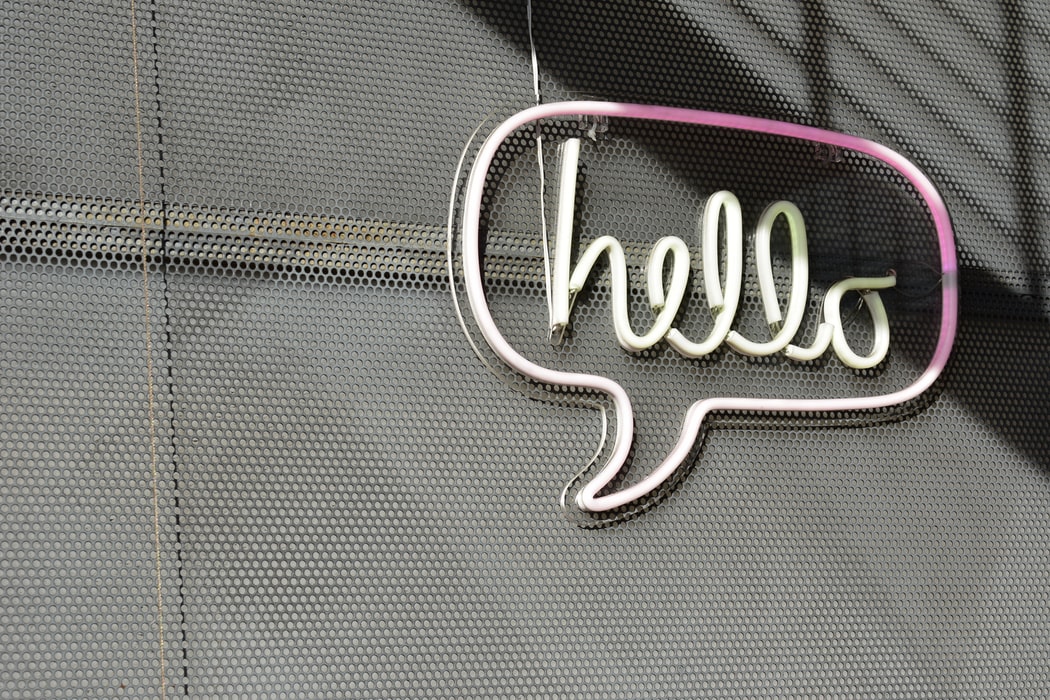
There's a moment of high drama when you give a speech or presentation—and it occurs before you've even said a word. It's the first few seconds when the "curtain" goes up.
In other words, it's all about anticipation. Your audience at that instant is paying maximum attention . . . they're primed for whatever they're about to experience. Often, these audience members will have no idea of your speaking ability. Oh, they may know they're interested in the topic. But they are almost surely filled with hope that the next half-hour or hour will be interesting and exciting.
Great speakers understand how to engage and move audiences at moments like this. You should too! Learn how in my Free Guide , "Six Rules of Effective Public Speaking."
What happens in the next 60 seconds will help determine whether your speech is successful or not. So here are four key elements you should always include in your speech's introduction. If you want listeners to pay attention, become intrigued, and tell themselves they're in good company, do these four things, in the following order:

1) Grab 'Em from the Moment You Begin Speaking
Consider how most presenters begin. Nearly always, it's along the lines of, "Good afternoon. It's so nice to see you all. Today I'll be talking about . ." followed by a slide with the word "Agenda" and 5 bullet points. If we can't hear you screaming as an audience member, it's probably only because you're too polite to be doing it in public.
These first few seconds are such valuable real estate, it's shocking that speakers don't spend any time working up an inviting treatment. In fact, it's not overstating things to say that if you want to succeed as a speaker, you have to know how to start a speech . There are rhetorical devices ready and waiting for you to use to kick off in a much more interesting way. Here for instance are 12 foolproof ways to open a speech .
It's not good enough to take three or four minutes to settle into your groove. Remember that moment of drama, and how everyone is anticipating what you're about to reveal. You need to burn rubber as soon as your tires hit the road, not spin them unnecessarily in the gravel. It's infinitely easier to keep an audience with you if you engage them from the start.
This is the time your natural talent is on display! To build credibility and earn trust, download my Free e-book , "12 Easy Ways to Achieve Presence and Charisma."

2) Reveal Your Topic (and Make It Sound Interesting)
At this point, without going any further into your speech, reveal your topic.
You may be thinking, "Well, yeah, of course!" Yet haven't you sat through speeches where, five minutes in, you're saying to yourself, "What's the topic here, anyway?" It one of the ways we as speakers may take things for granted, believing that the subject matter is perfectly obvious. (The phrase 'perfectly obvious' should not be part of your public speaking thought process!)
Even if the topic of your speech is emblazoned on posters and flyers beforehand, you lose nothing by reminding the audience about it in your intro. Besides, this is an opportunity to make it sound interesting. You could say, "My topic today is migrating birds of the Northeast." OR you could offer this instead: "Today, you'll be meeting some of the most eccentric characters you could ever run into . . . who just happen to be sitting outside your window right now."
Which talk sounds more interesting?
Just be sure to use language that helps rather than hurts your cause. Learn more in my Free White Paper , "25 Words or Phrases to Avoid in Speeches and Presentations."

3) Tell Them Why They Need to Listen
Here's the most neglected family member of speech introductions—the relative too many speakers kept hidden away in the attic, never to see the light of day. It's the moment you tell everyone why your topic is something they really need to pay attention to.
This is a huge part of engaging audiences and getting them to be present. And as I say, many presenters never even give it a thought. But consider this: every member of your audience is in a "What's-in-it-for-me" frame of mind every time they listen to a speech. They're wondering if this is going to be worth their presence and the effort it took to get here (and the time it's taking them away from their work.)
If you answer those questions in a way that relates to their lives and makes the payoff to them clear, they will pay attention. "I want to talk about this with you today, because it's going to make your life much easier," is a great way, for instance, to address a new procedure that everyone in the department would otherwise be bored to death to hear about. So tell them specifically what's in it for them. Believe me, their ears will perk up.

4) Give Them a Roadmap of Your Journey Together
So let's review. You've hooked your listeners' attention, made your topic sound intriguing, and told them how it's going to improve their lives. You're ready for the final part of your introduction: giving them a roadmap of where you'll be going together.
Call it a blueprint if you like that metaphor. (I prefer roadmap because it presupposes that you will be providing signposts along the way.) Partly, this is a way to make your subject manageable. Whatever that subject is, it's too big to talk about in its entirety. So you have to clue listeners in to the sub-topic areas you'll be addressing in this speech. It may sound something like this:
"I'll be talking about three specific elements of [reaching this goal, gaining this proficiency, understanding what you're looking at, etc.]. First, we'll examine [your first main point]. Once we have that information, we'll be able to [discuss your second item]. Finally, we'll add the third ingredient which will [give us a functioning model, repair the breach, head off the problem in the future . . . whatever the particulars are in your talk]." To me, this is already sounding more interesting than: "Here are the five parts of today's agenda for this speech."
As the great salesman Dale Carnegie once advised (and as I wrote about here ): "Tell the audience what you're going to say, say it; then tell them what you've said." To translate that into today's public speaking: Entice them with the journey you'll be going on together, take them there; then remind them of what an enlightening trip it's been.
You should follow me on Twitter here .
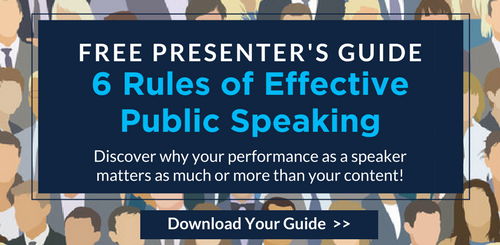
Gary Genard is an actor, author, and expert in theater-based public speaking training. His company, Boston-based The Genard Method offers in-person and online training to help executives and teams become extraordinary communicators. In 2020 for the seventh consecutive year, Gary has been ranked by Global Gurus as One of The World's Top 30 Communication Professionals . He is the author of How to Give a Speech . His second book, Fearless Speaking , was recently named as " One of the 100 Best Confidence Books of All Time ." Contact Gary here .
Tags: public speaking training , presentation skills , public speaking , public speaking tips , how to start a speech , video conferencing , sales training , speech introduction , presence , leadership , keynote speaker , online meetings , how to write a speech , motivational speaker , public speaker , leadership training , audiences , keynote speaker training , how to start a presentation , motivational speaker training , sales , online coaching , Zoom , online classes , online learning , online training , speaking tips , zoom meetings , virtual meetings , videoconferencing , video conferences , introduction , how to write an introduction
Subscribe to Email Updates
Subscribe to the blog, follow gary genard.
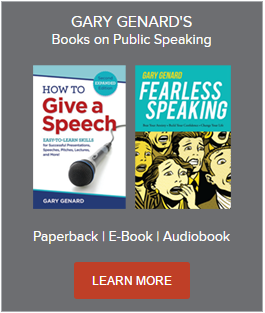
- Training Techniques
Main Office - Boston
[email protected] 617-993-3410
- Executive Presentation Skills
- Rehearsal & Preparation
- Group Presentation Skills
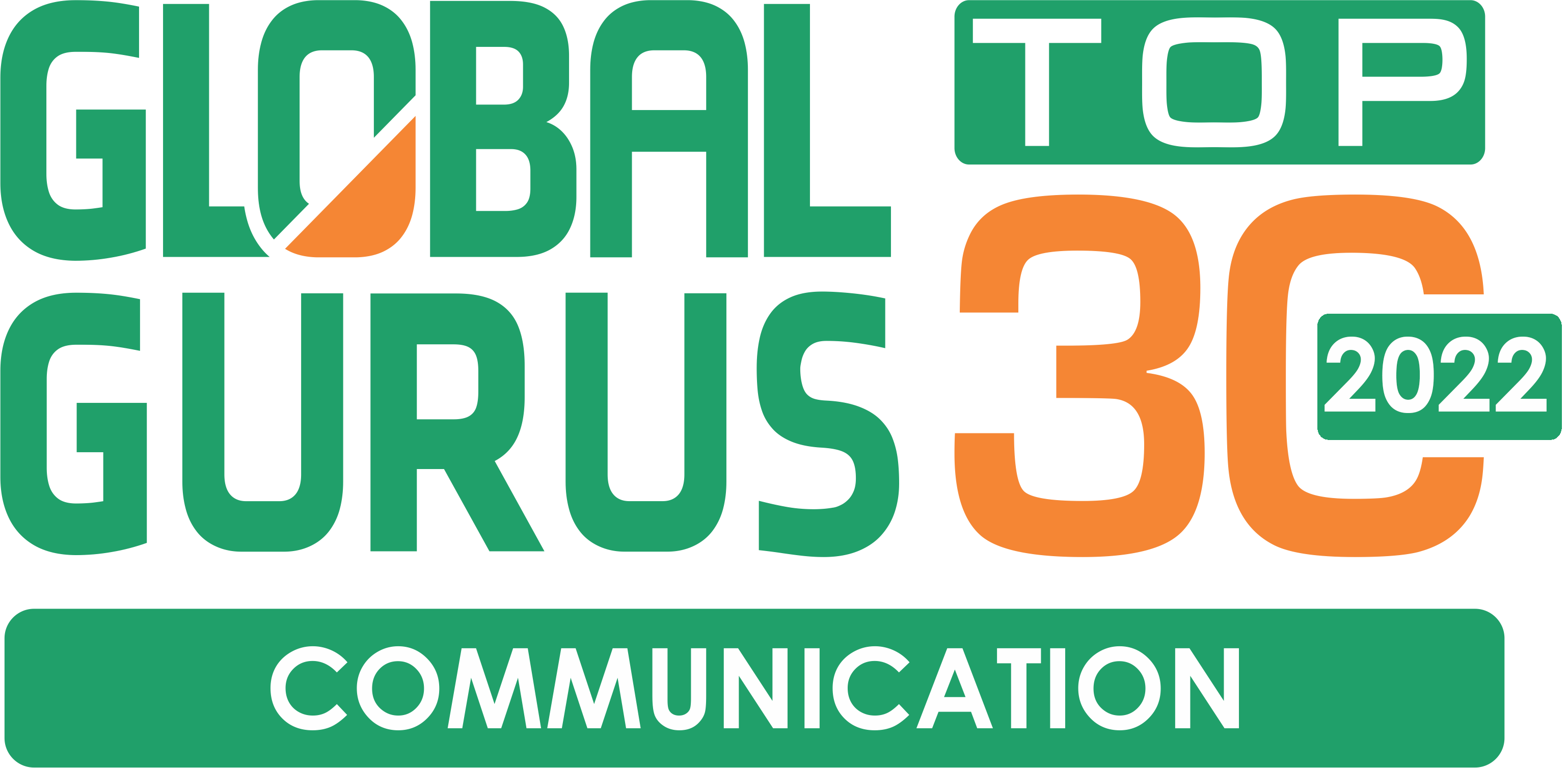

IMAGES
COMMENTS
7 Tips for Delivering the Best Introduction Speech. Now that you know how to write an effective introduction speech, let's focus on the delivery. The way you present your introduction is just as important as the content itself. Here are some valuable tips to ensure you deliver a better introduction speech: Tip# 1: Maintain Eye Contact
So if you have a speech opening that seems slightly dull, see if you can add some body movement to it. If your speech starts with a story of someone running, actually act out the running. If your speech starts with a story of someone reading, actually act out the reading. It will make your speech opening that much more impactful.
Using those that relate to your speech topic as the opening of your speech is a good way to grab the attention of the audience. It shows how relevant and up-to-the-minute the topic is. For example: "'Death toll soars to 76 in Florida after Hurricane Ian demolished entire communities.' 'Noru became a super typhoon in 6 hours.
When you start your speech, you can also pose a problem to the audience. As you deliver your speech and reach the conclusion, offer a solution to the problem you posed in your introduction. For instance, a speech or presentation on climate change might start with a statement of the problem using firm declarative statements. 6.
1. Choosing the Right Opening Line Finding the perfect opening line for your speech is important in grabbing your audience's attention. A strong opening line sets the stage for the points you want to make and helps you establish a connection with your listeners. 1. Start with a question Engage your audience from the very...
The goal of an ideal introduction to your speech; Giving a speech: seven perfect speech introductions. 1. He who asks, leads - starting with a question; 2. Start your speech with a quote; 3. Inspire your audience with storytelling; 4. Start with an open loop; 5. Enchant the audience with parables; 6. Facts, figures and statistics as an ...
This is why you need to start your speech strong with an attention-grabbing speech introduction. Learn how to write a speech introduction to get your audience's attention. Image source: Envato Elements. If you feel a little bit lost in the matter, fear not! This tutorial is here to help you out. We'll go over: how to write a speech introduction
The most important part of your speech is the introduction because if you don't get their attention, they are not listening to the rest of what you have to say. To get attention, tell a story, use humor, share a quote, tell a startling fact, show a prop, ask a question, reference the occasion.
By starting your intro speech with a question you allow for a lead-in to present what you want to talk about all while engaging your audience. Start with a Story . A well-recited story draws the audience in and incites compassion. People remember personal stories far more easily than other facets of public speeches. ... When writing an ...
Successful presenting means knowing how to start a speech. Here's how to write an introduction to make it powerful. There's a moment of high drama when you give a speech or presentation—and it occurs before you've even said a word. It's the first few seconds when the "curtain" goes up. In other words, it's all about anticipation.